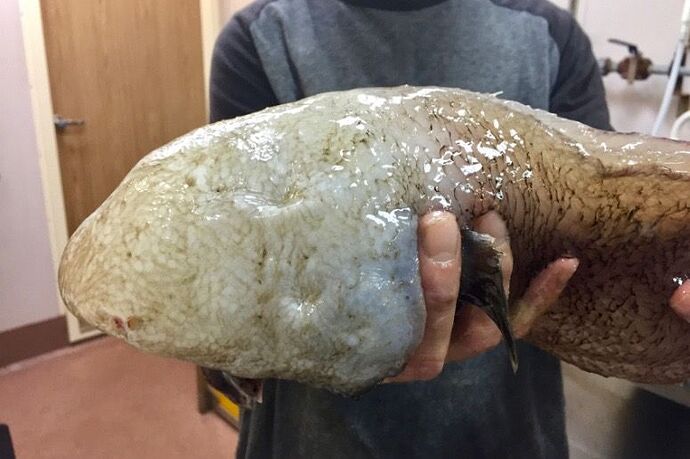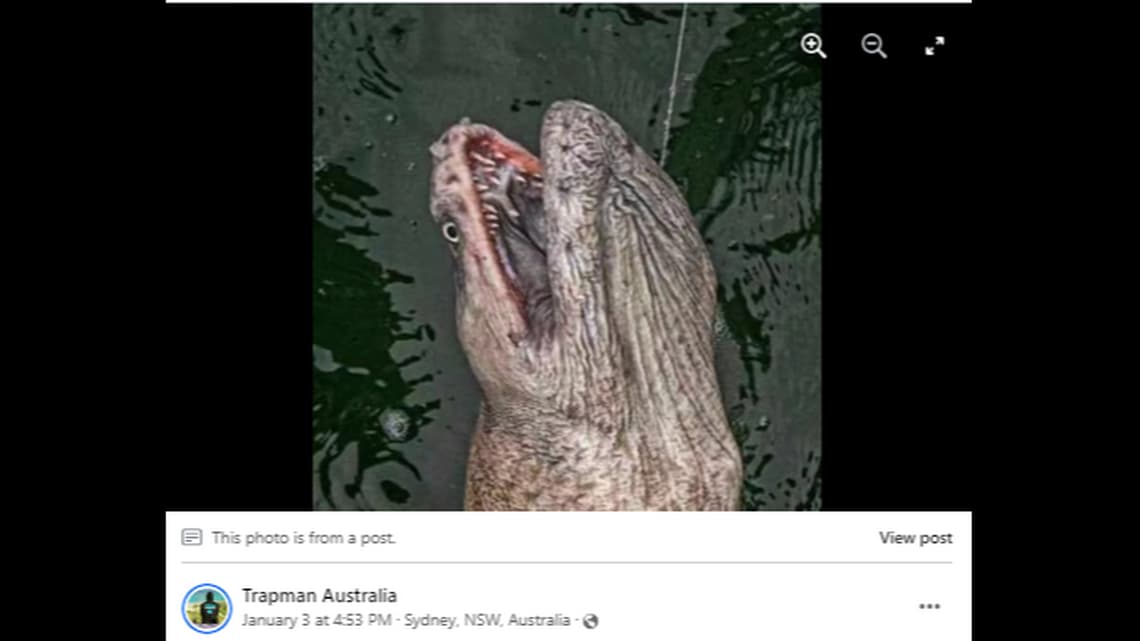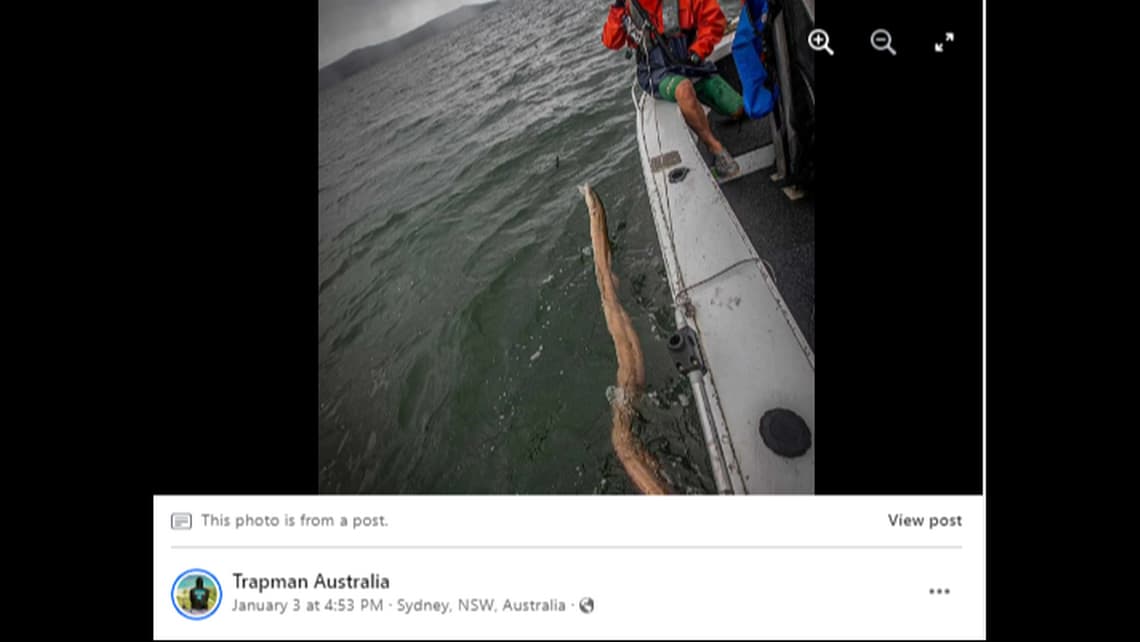“Ignorance is of a peculiar nature; once dispelled, it is impossible to reestablish it. It is not originally a thing of itself, but it is only the absence of knowledge; and though man may be kept ignorant, he may not be made ignorant.”
- Thomas Paine
- “Immortal” and indestructible" surround all and direct all.
- Existing opposites are separated from the unity.
- Animals come into being through vapors raised by the sun.
- Man, however, came into being by another animal, namely the fish, for at first he was like a fish.
- The soul is like air in its nature.
From “On Nature”, by Anaximander, Greece, 560 B.C.
"It was on one of those glorious autumn afternoons, that we sometimes enjoy
in England, when I was asked to go in and sit with the well known Professor, Charles Darwin. He was almost bedridden for some months before he died. I used to feel when I saw him that his fine presence would make a grand picture for our Royal Academy; but never did I think so more strongly than on this particular occasion.
He was sitting up in bed, wearing a soft embroidered dressing gown, of rather
a rich purple shade. Propped up by pillows, he was gazing out on a far-stretching
scene of woods and cornfields, which glowed in the light of one of those marvelous
sunsets which are the beauty of Kent and Surrey. His noble forehead and fine features seemed to be lit up with pleasure as I entered the room.
He waved his hand toward the window as he pointed out the scene beyond,
while in the other hand he held an open Bible, which he was always studying.
“What are you reading now?” I asked, as I seated myself by his bedside.
“Hebrews!” he answered — “still Hebrews. ’The Royal Book,’ I call it. Isn’t it
grand?”
Then, placing his finger on certain passages, he commented on them.
I made some allusion to the strong opinions expressed by many persons on
the history of Creation, its grandeur, and then their treatment of the earlier chapters
of the Book of Genesis.
He seemed greatly distressed, his fingers twitched nervously, and a look of
agony came over his face as he said:
“I was a young man with unformed ideas. I threw out queries, suggestions,
wondering all the time over everything; and to my astonishment the ideas took
wildfire. People made a religion of them.”
Elizabeth Hope, in the American Baptist Journal “the Watchman Examiner”, 1915
“On the Origin of Species by Means of the Health of the Ether”, by Jeff Miller, 2022
In 1859, Charles Darwin published “On the Origin of Species by Means of Natural Selection, or the Preservation of Favoured Races in the Struggle for Life”. To this writing, it has effected a successful misdirection of inquiry in regard to the actual origin of life forms on this plane of existence.
Darwin’s is a mean-spirited Western materialist, who holds that life evolves mechanistically. Versus the truth, which is that the size, fertility, longevity and very existence of any organism varies directly with the health of its etheric environment.
Looking back, Darwin’s grotesque little Confidence game kept the populace in ignorance for just over 160 years, until I destroyed it in my spare time a few months ago.
Grade school children studying the subject in the future are going to have a hard time getting their heads around the concept of a scientific establishment which rejected the existence of the ether, which was known to the ancients as the fifth element, along with Earth, Wind, Fire and Water.
But I’ll let the data do the talking.
THE ETHERIC ORIGIN OF SPECIES - THE DATA
In the 1500’s, otters winked out of existence on the River Otter in England. They remained absent for five over hundred years, until they winked back into existence there in 2015, when the ether improved in health to the point where the species could once again manifest within it.
In the 1700’s, the hoodwinker sunfish winked out of existence in the Pacific Ocean, and would remain absent for over three hundred years, until it suddenly reappeared in the Pacific Ocean off New Zealand in 2017.
In the mid-1700’s, the European bison winked out of existence in Germany, and would remain absent for over 250 years, until it suddenly reappeared there in 2017.
In 1866, a blue catfish was caught in the Missouri River near Portland, Missouri. It weighed 315 pounds.
In “the 1800’s” a blue catfish was caught on the Minnesota River. It weighed 160 pounds.
Here we can see the size of the blue catfish decreasing, going forward in time, as the etheric environment degrades.
The USGS map shows that the blue catfish is non-native to Minnesota. How can the blue catfish be non-native to Minnesota if there is an examples of it there from the 1800’s?
I have exposed the duplicity of the USGS by using what was known in the old days as “fact checking”.
In the mid-1800’s, the Fisher winked out of existence in Cochise County, Iowa. It would remain absent for over 150 years, until it suddenly reappeared Iowa in 2017.
In the 1850’s, the sticky, carnivorous sundew plants known as Drosera rubricalyx and Drosera macropetala disappeared from Australia. It would remain absent for over 170 years, until it suddenly winked back into existence there in 2022.
In the late 1800’s, the black-naped pheasant winked out of existence in the Papua New Guinea. It would remain absent for over 140 years, until it suddenly reappeared there in 2022.
In the late 1800’s, the cusk eel, or “faceless fish” winked out of existence in Australia. It would remain absent for over 100 years, until it suddenly reappeared there in 2017.
In the late 1800s, the guinea-pig-sized Oriental blue clearwing moth winked out of existence in Malaysia. It would remain absent for over 100 years, until it suddenly reappeared there in 2017.

In 1876, or soon after, the webless shrub frog, Pseudophilautus hypomelas, winked out of existence in Sri Lanka,. It would remain absent for over 130 years, until it suddenly reappeared there in 2014.
In 1890, or the soon after, the Tennessee log perch darter winked out of existence in Tennessee. It would remain absent for over 100 years, until it suddenly reappeared there in 2017.
In 1898, or soon after, the red-crested tree rat winked out of existence in Columbia. It would remain absent for over one hundred years, until it suddenly reappeared there in 2011.
From 1903 to 2021, the swordfish increased in size by 411%, or by well over five times, from 150 pounds (Catalina Island, California) to 767.8 pounds (Florida).
Essay: Within the context of the 65 million year existence of the species, explain the precise genetic mechanisms which caused the to swordfish well over quintuple in size in just the last one hundred years, and then explain the external “natural selection” environmental drivers which led to those sudden, historically-unprecedented genetic changes. Cross-reference against two other large fish species and compare and contrast the relative increases in size and the time periods over which those changes took place.
The truth is that the size, fertility, longevity and very existence of any organism vary directly with the health of its etheric environment.
In 1903, the record swordfish taken off Catalina Island in Southern California weighed 150 pounds.

(Record swordfish, Catalina Island, California, 1903, 150 pounds)
In 2021, the Florida state record swordfish weighed 767.8 pounds.
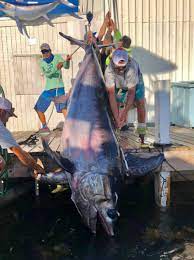
(Florida state record swordfish, 2021, 767.8 pounds)
Now let’s look at the pictures next to one another:


In 2021, the largest swordfish in history was almost five times the size of the largest swordfish in history in 1903.
“The Party told you to reject the evidence of your eyes and ears. It was their final, most essential command.”
― From “1984”, by George Orwell, 1949
From 1903 to 1979, there are no appearances of the swordfish anywhere in the world except off Catalina Island in Southern California.
From 1903 to to 1979, there are no appearances of the swordfish in the Atlantic Ocean or the Gulf of Mexico.
From 1903 to 1979, the waters off Santa Catalina island in Southern California were the only places on Earth that swordfish manifested. Or billfish of any kind, for that matter.
The species is literally winking into and out of existence, from our perspective, just as Sasquatch or the great Orm of Loch Ness do. Only you’ve been conditioned over literally Millenia not to think so.
From 1903 to 1915, the swordfish increased in size by 94%, or close to doubled in size, from 150 pounds (Santa Catalina Island, California) to 292 pounds (Santa Catalina Island, California).
Wthin the context of the 65 million year existence of the swordfish as a species, Charles Darwin’s “theory of evolution” obviously cannot explain the sudden near-doubling in size of the swordfish in less than twenty years from 1903 to 1915.
In the early 1900’s, the snout moth disappeared from the Philippines. It would remain absent for over one hundred years, until it winked back into existence there in 2022.
In the early 1900’s, wild wolves disappeared from Rome, Italy. They would remain absent for over one hundred years, until they suddenly reappeared there in 2017.
In the early 1900’s, California dissanthelium grass disappeared on Southern California’s Catalina Island. It would remain absent for roughly one hundred years, until it suddenly reappeared there in 2005.
In 1910, or soon after, the Crambione Cookii Jellyfish winked out of existence in Australia. It would , and remain absent for over one hundred years, until it suddenly reappeared there in 2013.
From 1915 to 1917, the world record swordfish increased in size by 45%, from 292 pounds (Catalina Island, California) to 422 pounds (Catalina Island, California).
From 1915 to 1917, the 24.5% average annual increase in size of the swordfish was 214% greater, or more than triple its 7.8% average annual increase in size from 1903 to 1915.
The growth rate of the swordfish is increasing hyper-exponentially, going forward in time. That’s not scientifically possible, at least not according to the rapidly-collapsing false Orthodoxy which holds that organisms increase in ever-smaller increments to a genetically-programmed maximum size, and that “there is no such thing as the ether".
The truth is that the size, fertility, longevity and very existence of any organism vary directly with the health of its etheric environment.
From 1917 to sometime in the 1930’s, the world record swordfish increased in size by 35.3%, from 422 pounds (Catalina Island, California) to 571 pounds (Catalina Island, California).
The swordfish suddenly more than tripled in size from 1903 to 1917, and then increased in size by only a third from 1917 to sometime in the 1930’s. The increase in size is exponentially slowing, going forward in time, as the damage done to the ether by early technologies such as the telegraph, telephone, and radio steadily degraded the etheric environment to an ever-greater degree.
In 1920, the black jellyfish winked out of existence in Southern California. It would remain absent for almost 100 years, until it suddenly reappeared there in 2013.
The the USGS table entry for the blue catfish in New Jersey includes references to New Jersey fish lists published in 1920 and 1952, yet only the 1920 list contains the blue catfish.
In 1920 and 1952, the USGS claims that the blue catfish was stocked in New Jersey. Given that the numbers of fish and the stocking location or locations are not mentioned, the 1920 and 1952 USGS table entries for the blue catfish are fraudulent.
It is a trail of false stocking reports put forward to rebut the subsequent sudden reappearance of the species in New Jersey, which, at this writing in 2022, has yet to take place.
In 1920, or soon after, the blue catfish disappeared from New Jersey, and remains absent to this day.
In 1925, or soon after, Magnolia pallescens, Magnolia domingensis and Magnolia hamorii all disappeared from the environment in Haiti. They would remain absent for almost 100 years, until they suddenly winked back into existence there in 2022.
In the 1930’s, Vanzolini’s bald-faced saki winked out of existence in the Amazon. It would remain absent for over seventy years, until it suddenly reappeared there In 2017.
Sometime in the 1930’s, the world record swordfish was caught off Catalina Island in Southern California. It weighed 571 pounds.
A current Wikipedia article contains this picture of a postcard made from a photograph of it:
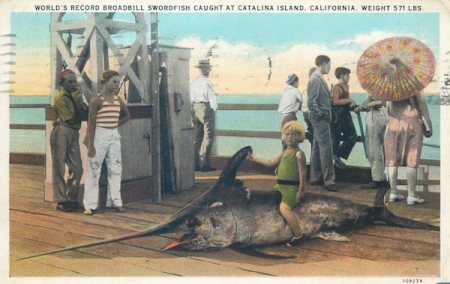
(The picture’s caption reads “World’s Record Broadbill Swordfish caught at Catalina Island, California. Weight 571 lbs.”)
From the 1930’s to 1958, the swordfish is absent from the record in Southern California.
In 1937, or soon after, the Albany adder winked out of existence in South Africa. It would remain absent for eighty years, until it suddenly reappeared there in 2017.
In 1940, or soon after, the Mexican salamander winked out of existence in Mexico. It would remain absent for seventy years, until it suddenly reappeared there in 2010.
In 1941, or soon after, Jordan’s babbler winked out of existence in Myanmar. It would remain absent for over seventy years, until it suddenly reappeared there in 2015.
The 1952 USGS table entry for the blue catfish in New Jersey is false, given that H.W. Fowler’s 1952 list of fishes in New Jersey does not include the blue catfish, and that no numbers or locations accompany the USGS’s claim of blue catfish stocking in New Jersey in 1952.
In 1953, the first and only Louisiana state record sailfish was caught in the Gulf of Mexico. It weighed 96 pounds, and was the first the example in the historical record of a billfish of any kind caught outside of Southern California.
In 1953, scientists made three longline sets offshore of the Mississippi River delta and caught 45 yellowfin tuna, two blue marlin, 13 white marlin, and one sailfish.
In 1954, John Lauricella, Sr., owner of the All American landed a 7 ½-foot white marlin weighing 50 pounds, the first one ever caught by rod and reel off Louisiana.
In 1954, on the same trip, on the yacht Kiwi, the Louisiana Item’s Paul Kalman caught a 50 pound white marlin in the Gulf of Mexico off Louisiana.
In 1954, on the same trip, Robert Norman, owner of the Kiwi landed a 70-pound yellowfin tuna, thus becoming the first person to catch an officially identified yellowfin on rod and reel off of Louisiana.
From 1955 to 2017, the average annual margins between fish records in this study increased by 2,000%, from .3% to 6.3%.
From 1955 to 1981, the average annual margins between fish records in this study remained unchanged, at .3%.
From 1955 to 1956, the margins between fish records in this study remained unchanged at .3%.
In 1955, or soon after, the Keruing Jarang Tree winked out of existence in Malaysia. It would remain absent for over fifty years, until it suddenly reappeared there in 2011.
On July 6, 1958, an unspecified “record” swordfish was caught off San Clemente island in California. It weighed 377 pounds, 12 ounces. The type of record it was has been obfuscated. Here, the far-larger world record holder from the 1930’s which we reviewed previously has been memory-holed.
Wikipedia - and everyone else - are all steadfastly pretending that it never existed.
From the 1930’s to 1958, the swordfish is absent from the record in Southern California. When it reappeared in 1958, after an absence of almost thirty years, it had decreased in size by 34%, from 571 pounds (San Clemente Island, California) to 377 pounds, 12 ounces (San Clemente Island, California).
Here, in 1958, television is in full swing, as are high tension power lines, and all manner of other “modern technologies”, all cumulatively poisoning the ether to an ever-greater degree, with clearly deleterious impact upon the swordfish.
From 1958 to 2003, the swordfish is once again absent from the record in Southern California. The etheric environment there had simply become too degraded for the species to manifest in that location.
From June 21, 1956 to July 1958, the blue marlin in the Gulf of Mexico off Louisiana increased in size by 166%, or well more than doubled in size, from 175 pounds to 465 1/2 pounds.
Angler are an obsessive, tireless bunch. They caught a blue marlin at the moment it appeared in the environment in the Gulf of Mexico off Louisiana, at thin threshold weight of 175 pounds. Then, in just over a month, it increased hyper-exponentially in size.
On June 21, 1958, the blue marlin winked into existence in the Gulf of Mexico off Lousiana, as Baton Rouge physician Glenn Gibson fished from Mitcheltree’s Jennifer Ann and boated Louisiana’s first blue marlin. It weighed 175 pounds.
The trip also produced two white marlin, a sailfish and 25 bull dolphin.
On June 21, 1958, the white marlin winked into existence in the Gulf of Mexico off New Orleans.
On June 21, 1958, the sailfish winked into existence in the Gulf of Mexico off New Orleans.
From July 1958 to 1962, the blue marlin in the Gulf of Mexico off Louisiana decreased in size by 14.9%, from 465 1/2 pounds to 396 pounds.
From 1958 to July 1977, the blue marlin in the Gulf of Mexico increased in size by 118.8%, or more than doubled in size, from 465.5 pounds to 1,018.5 pounds.
In July 1958, at the Grand Isle Tarpon Rodeo, in the Gulf of Mexico off Louisiana, Jim Meriweather’s yacht, the Mallou II, landed a 465 1/2-pound blue marlin. Why wasn’t this fish a Louisiana state record?
On May 25, 1961, the New Orleans Big Game Fishing Club was formed, with 21 members.
Those giant billfish, and those giant gamefish were not in existence in the Gulf of Mexico previously, or where would have been a club of people fishing for them.
From 1962 to 1976, the white marlin in the Gulf of Mexico increased in size by 63.4%, from 82 pounds (Louisiana) to 134 pounds (Dennis L. Good’s Louisiana state record).
In 1962, J.B. Prager III caught a white marlin in the Gulf of Mexico off Louisiana. It weighed 82 pounds. Why wasn’t this fish a Louisiana state record? The first Louisiana state record white marlin is from 1976.
In 1962, Herman “Dutch” Prager caught his first blue marlin in the Gulf of Mexico off Lousiana. It weighed 396 pounds.
In 1962, the yellowfin tuna winked into existence in the Gulf of Mexico, when Herman “Dutch” Prager landed a yellowfin tuna in the Gulf of Mexico off Lousiana. It weighed 128 pounds.
In 1962, J.B. Prager III caught a white marlin in the Gulf of Mexico off Louisiana. It weighed 82 pounds.
In 1962, Joe Giardina caught a white white marlin in the Gulf of Mexico off Louisiana. It weighed 68 pounds.
In July 1962, the New Orleans Big Game Fishing Club held its first tournament over the Fourth of July weekend in 1962, with 46 members and 44 guests participating.
In 1962, or soon after, the cave squeaker frog Artholeptis troglodytes winked out of existence in Africa. It would remained absent for over fifty years, until it suddenly reappeared there in 2017.
From 1963 to 1972, sailfish in the Gulf of Mexico were the only billfish species extant anywhere in the world.
From 1963 to 1972, sailfish in the Gulf of Mexico increased in size by 53%, from 62 pounds (Mississippi) to 95 pounds (Texas).
In 1963, Eddie Jones caught the Mississippi conventional tackle state record sailfish. It weighed 62 pounds. At this moment, in 1963, the sailfish is the only billfish extant of any kind, anywhere in the world, the swordfish having winked back out of existence roughly four years earlier in Southern California in 1958, or soon after.
From its first manifestation there in 1953 to 1963, the sailfish in the Gulf of Mexico decreased in size by 35.4%, from 96 pounds to 62 pounds (Louisiana vs. Mississippi). That’s an average annual decrease in size of 3.5% per year over each of those ten years.
This clearly shows the impact of the ever-degrading health of the ether on the size of the sailfish in the Gulf of Mexico.
Sometime during the 1960’s, the iridescent green beetle later known as Bembidion brownorum winked out of existence in California. It would remain absent for over fifty years, when it suddenly reappeared there in 2021.
The University of California sat on the discovery for two years before announcing it, and then claimed that it had been there, all along, only nobody had looked for it with the proper skill or assiduousness up until then.
In the 1960’s, the blackfin cisco winked out of existence in the Great Lakes. It would remain absent for over 40 years, until it suddenly reappeared there in 2017.
In 1966, or soon after, Basilewski’s cranefly winked out of existence on St. Helena Island in the South Atlantic. It would remain absent for fifty years, until it suddenly reappeared there in 2016.
In 1967, or soon after, the highland wild dog winked out of existence in New Guinea. It would remain absent for fifty years, until suddenly reappearing there in 2017.
In 1967, or soon after, the Mount Nimba tree frog winked out of existence in Africa’s Ivory Coast. It would remain absent for over forty years, until is suddenly reappeared there in 2010.
The 1970 Kentucky state record blue catfish is not corroborated by any independent media verifications or photographs. This record is a fabrication.
In 1970, it is purported by outdoornebraska.gov and numerous others that Raynold Promes caught the Nebraska state record blue catfish in the Missouri River, and that it weighed 100 pounds, 8 ounces.
Yet there are no independent media accounts corroborating this catch, and there are no photographs of this fish. Further, the USGS table for the blue catfish does not include the purported Nebraska state record from 1970.
The 1970 Nebraska state record blue catfish is fabricated.
Sometime after 1970, the puffer blowfish had largely disappeared from the Atlantic Ocean off New Jersey.
From 1972 to 1974, the sailfish in the Gulf of Mexico, still the only billfish of any kind extant anywhere in the world, decreased in size by 14.7%, from 95 pounds (Texas) to 81 pounds (Alabama).
After first manifesting within the environment for the first time in the Gulf of Mexico off Louisiana in 1953, the sailfish flourished for a decade, increasing by half-again in size. But, then, from 1972 to 1974, it suddenly lost a over a tenth of its body weight. That’s the stranglehold of the poisoning of the ether by technology getting its grip.
The sailfish first manifested in the Gulf of Mexico in 1953, at a threshold weight of 96 pounds. Then, over the next ten years, it decreased in size by a third, to 62 pounds, and then increased in size by 53% in the nine years from 1963 to 1972. Then it decreased in size by 15% from 1972 to 1974, to 81 pounds, and then disappeared from the record.
The species came into existence in the Gulf of Mexico when the health of the ether was at a point where the fish could manifest there, and then disappeared from our 3D reality 19 years later when the health of the ether degraded to a point where that particular species of fish could no longer exist within it.
Sometime after 1972, the chain pickerel disappeared from the environment in Delaware. It would remain absent for fifty years, until it suddenly winked back into existence there in 2022 at a weight 6% above that which it had last manifested.
In 1973, the USGS claims that the blue catfish was collected in the Colorado River Arizona for the first time in the state’s history. However, no data of any kind is provided, and there are no independent media accounts or photographs corroborating the claim.
The USGS table entry for the blue catfish in Arizona in 1973 is false.
From 1976 to 1997, the size of the white marlin in the Gulf of Mexico decreased by 37%, from 134 pounds to 98 pounds, 13 ounces. That’s an average annual decrease in size of 1.7% per year over each of those 21 years.
If fish size varies with the health of the ether, and the variable here is time, then the health of the ether decreasing, going forward in time, from 1976 to 1997.
In July 1976, two years after the low wavelength microwave radiation drove the sailfish out of existence in the Gulf of Mexico (or anywhere else, for that matter), the white marlin suddenly appeared in the Gulf of Mexico. Dennis L. Good caught the first-ever Louisiana state record white marlin. It weighed 134 pounds.
At this moment, in 1976, the white marlin is the only billfish of any kind extant anywhere in the world. You’ll recall that the swordfish was extant from 1903 or prior to 1958, in one location on Earth, off San Clemente Island in Southern California.
The swordfish overlapped briefly with the Sailfish, which manifested in the Gulf of Mexico for just 19 years, from 1953 to 1974, when it, too, winked back out of existence on this plane.
The white marlin first manifested in the Gulf of Mexico in 1976 at a weight of 134 pounds (Louisiana). At the time, it was the only billfish species extant in the anywhere. It didn’t last long. From 1976 to 1997, the white marlin was absent from the record in the Gulf of Mexico, or anywhere else, for that matter.
From 1977 to 1997, both the white marlin and the blue marlin, the only two billfish species extant in the Gulf, decreased in size by an average of 28%.
From 1977 to 1983, the size of the blue marlin in the Gulf of Mexico decreased by 52%, from 1,018.5 pounds (Louisiana) to 488 pounds (Mississippi). That’s an average annual decrease in size of 8.7% per year over each of those six years.
In July 1977, Linda Koerner caught the first Louisiana state record blue marlin. It weighed 1,018.5 pounds. It is the first and only other appearances of the blue marlin in Louisiana in 1958 and 1962, at less than half this weight.
Further, this is just one year after the first manifestation of the white marlin anywhere in history, in the Gulf of Mexico in 1976.
In 1978 and 1979, after an absence from this plane of existence of almost twenty years, the swordfish briefly reappeared successively in the Atlantic and the Gulf of Mexico, after which the swordfish is just as quickly snuffed back out, and would once again remain absent from this plane of existence for another 23 years, until it reappeared simultaneously in the Pacific Ocean, Atlantic Ocean and the Gulf of Mexico in 2003.
From 1978 to 1979, after a twenty year absence from this plane of existence, the swordfish appeared successively in the Atlantic Ocean (Florida in 1978, North Carolina in 1979).
From 1978 to 2012, the swordfish is absent from the record in Florida, Virginia and North Carolina.
From 1978 to 1979, the Atlantic Ocean was the only place in the world that the swordfish existed. Its size decreases progressively up the East Coast because the etheric environment down in the Keys was that much healthier than it was off the heavily-populated and technology-ridden East Coast of the United States.
In 1978, the swordfish suddenly appeared in the waters off Florida for the first time in the history of the state. It’s the first appearance of the swordfish anywhere outside of Santa Catalina Island in Southern California, where the species was last documented in 1958, twenty years previously.
In May 1978, after the a twenty year absence from this plane of existence by the swordfish, Stephen Stanford caught the first-ever Florida state record swordfish. It weighed 612.75 pounds. This is just a year after the swordfish winked back into existence in the Gulf of Mexico off Louisiana for the first time in almost twenty years.
There are no appearances of the swordfish in the Atlantic prior to 1978. The last time the swordfish was documented was in Southern California, off San Clemente Island, in 1958. There are no Florida state records for the swordfish prior to 1978.
In 1978, the swordfish suddenly appeared in the waters off Virginia for the first time in the history of the state, at a weight of 381 pounds, 8 ounces.
In 1978 or soon after, the swordfish winked out of existence in the Atlantic Ocean off Florida. It would remain absent for 44 years, until it reappeared there in 2022.
In 1979 or soon after, the swordfish winked out of existence in the Atlantic Ocean off North Carolina, It would be absent for 43 years, until it reappeared there in 2022, at a weight of 504.5 pounds, 14% larger than the 445 pounds at which it had last manifested.
In 1979, or soon after, the Omaniundu Reed Frog winked out of existence in the Congo in Africa. It would remain absent for over thirty years, until it suddenly reappeared there in 2011.
From 1979 to 2003, the swordfish is absent from the record, anywhere, until it began to be caught once again simultaneously in California, North Carolina and Florida in 2003.
From 1979 to 2003, the swordfish was driven out of this physical plane of existence by low-wavelength microwave radiation.
In 1979, the swordfish suddenly appeared in the waters off North Carolina for the first time in the history of the state, at a weight of 441.5 pounds.
In July 1980, it is claimed that Tom Dentin caught the Louisiana state record swordfish. It weighed 310 pounds. However, there are no independent media accounts or photographs verifying this catch.
Therefore we must presume that this record is fabricated.
From 1977 to 2003, there are no accounts of the swordfish anywhere in the record, anywhere. The health of the ether was degraded enough by technology of all stripes that, as a species, the swordfish could simply not exist within this 3D environment.
They were hanging up stuffed over bars, to be sure, but nobody was catching any, anywhere.
Of course, as this database builds, there will be new examples documented. But they won’t be multitudinous, and the preponderance of the evidence is already quite clear.
Fishing is an obsessively-practiced pastime among humans, and it has been extremely well documented, especially the grail of big-game sports fishing.
In July 1980, louisianasportsman.com claims “The current state record broadbill swordfish, according to the Louisiana Outdoor Writers Association, was caught by Thomas Dantin in the Mississippi Canyon in July of 1980, which weighed 310 pounds even.”
However, there are no independent media accounts or photographs verifying this catch.
We must presume that this record is fabricated.
In 1981, or soon after, the black-striped wallaby winked out of existence in Australia and would remain absent for almost forty years, until it reappeared there in 2017.
Sometime after 1982, the striped bass winked out of existence in the Atlantic Ocean off New Jersey, and would remain absent for almost forty years, until it suddenly winked back into existence there in 2013.
Sometime soon after 1982, the tarpon disappeared from the Atlantic Ocean off New Jersey, and would remain absent for almost forty years, until it suddenly reappeared in Barnegat Inlet in 2021.
From 1983 to 1984, the size of the blue marlin in the Gulf of Mexico increased by 69%, from 488 pounds (Mississippi) to 824 pounds (Texas).
From 1984 to 1988, the Texas state record blue marlin increased in size by 5.9%. That’s an average annual increase in size of 1.5% per year over each of those 4 years.
From 1984 to 1988, the 1.5% average annual increase in size of the blue marlin in the Gulf of Mexico was 98% less than its one-year 69% increase in size from 1983 to 1984.
The growth rate of the blue marlin in the Gulf of Mexico is decreasing exponentially going forward in time because of the progressive degradation of the health of the ether by low-wavelength microwave radiation.
In 1984, or soon after, the blue marlin winked out of existence in Mississippi, and would remain absent for 14 years, until it suddenly reappeared there in 1997 at a weight of 917.4 pounds, which was 10% greater than the 824 pounds at which it had last manifested there.
In 1984, or soon after, the alligator snapping turtle winked out of existence in Illinois, and would remain absent for over thirty years, until it suddenly reappeared there in 2017.
From 1984 to 1985, the average margins between fish records in this study increased by 25%, from .4% to .5%.
From 1985 to 1992, the average annual margins between fish records in this study remained unchanged at .5%.
Sometime soon after 1985, Magnolia ekmanii disappeared from the environment in Haiti. They would remain absent for 25 years, until it suddenly winked back into existence there in 2011.
Sometime soon after 1987, the puffer blowfish completely disappeared from the Atlantic Ocean off New Jersey, until it suddenly reappeared there in 2006.
Sometime soon after 1987, the sandbar shark disappeared from the Atlantic Ocean off New Jersey, until it suddenly reappeared in numbers there in 2014.
From 1988 to 2014, the blue marlin is absent from the record in Texas. It was last seen there at a weight of 824 pounds. It then disappeared for the next 26 years, and then reappeared in 2014 at a weight of 972.7 pounds, an 11% increase in size.
From 1988 to 1989, the size of the blue marlin in the Gulf of Mexico, decreased by 11%, from 876.5 pounds (Texas) to 779.8 pounds (Alabama).
Sometime soon after 1988, the white shark disappeared from the Atlantic Ocean off New Jersey, until it suddenly reappeared there in 2022.
From 1989 to 2013, the blue marlin is absent in the record in Alabama for 24 years, until it suddenly reappeared at a weight of 845.8 pounds, which was 8.5% greater than the 779.8 pounds at which it had last manifested there.
From 1988 to 1997, the blue marlin in the Gulf of Mexico increased in size by 4.6%, from 876.5 pounds (Texas) to 917.4 pounds (Mississippi). That’s an average annual increase in size of .5% per year over each of those nine years.
From 1988 to 1997, the .5% average annual increase in size of the blue marlin in the Gulf of Mexico was 66% less than its 1.5% average annual increase in size there from 1984 to 1988.
The average annual size of the blue marlin is continuing to decrease exponentially going forward in time because the level of health of the ether in the Gulf of Mexico continues to decline under the collective influence of what we know as “technology”.
Sometime soon after 1989, the sand tiger shark disappeared from the Atlantic Ocean off New Jersey, until it suddenly reappeared there in 2014.
From 1991 to 1992, the average margins between fish records in this study remained unchanged at .5%.
To say that the sample sizes are small from to 1992 is an understatement. My surmise is that the rates were basically unchanged. We could call it .5% all the way back, and still have to contend with the sudden, exponential increase in fish growth rates which commenced in the early 1990’s, as the vibrational rate of the Earth began to increase in earnest as it approached the great year of transition of 2012.
Fish records per year is another line of inquiry provided by this data, however I’m not going to get into that now.
From 1992 to 1993, the average margins between fish records in this study increased by 39.9%, from .5% to .7%.
Sometime soon after 1991, the barracuda disappeared from the Atlantic Ocean off New Jersey, until it suddenly reappeared there in 2014, at a size 37% greater than it had manifested previously.
In 1992, the ‘fairy lantern’ plant, Thismia kobensis, winked into existence in Kobe, Japan for the first time in history. An industrial complex was quickly erected with the expressed purpose of eliminating the new species. It was then absent from the environment for almost thirty years, when it suddenly reappeared in Kobe in February 2023.
From 1993 to 2017, the average annual margins between fish records in this study increased by 800%, from .7% to 6.3%.
From 1993 to 1995, the average margins between fish records in this study remained unchanged at .7%.
From 1995 to 1997, the average margins between fish records in this study increased by 114%, or more than doubled, from .7% to 1.5%.
This sudden, gigantic increase in fish growth rates is the reason that aerosol operations got underway worldwide in 1998. And it’s why the literal forest of what we euphemistically call cell towers was thrown up almost overnight in every nation that same year.
From 1995 to 1996, the average margins between fish records in this study increased by 57.1%, from .7% to 1.1%.
From 1996 to 1997, the average margins between fish records in this study increased by 36.3%, from 1.1% to 1.5%.
From 1997 to 2014, water clarity in California’s Lake Tahoe increased by 21.3%, from 64.1 feet to 77.8 feet. That’s a baseline average annual increase in clarity of 1.25% per year over each of those seventeen years.
From 1997 to 1998, water clarity in California’s Lake Tahoe increased by 3.12%, from 64.1 feet to 66.1 feet.
From 1997 to 1998, the 3.12% increase in water clarity in California’s Lake Tahoe was 250% above the baseline average annual increase in clarity of 1.25% per year documented in Lake Tahoe from 1997 to 2014.
In 1996, the blue catfish suddenly appeared in Florida for the first time in the state’s history.
In 1996, the walrus disappeared from the environment in Scotland. It would remain absent for over 25 years, until it suddenly winked back into existence there in 2023.
From 1997 to 2000, white marlin in the Gulf of Mexico decreased in size by 18.3%, from 98 pounds to 80 pounds. That’s an average annual decrease of 6.1% per year over each of those three years.
The 6.1% average annual decrease in size of white marlin in the Gulf of Mexico from 1997 to 2000 was 259% greater, or heading toward quadruple the 1.7% decrease documented among the species there annually from 1976 to 1997.
If fish size varies directly with the health of the ether, then the health of the ether in the Gulf of Mexico degraded hyper-exponentially from 1997 to 2000, versus the rate documented from 1976 to 1997. That’s why, in 2000 or soon after, the white marlin was driven out of existence by low-wavelength microwave radiation.
Clearly demonstrating the sudden, quantum, deleterious, deadly effect of the implementation of wireless technology in the late 1990’s.
From 1997 to 2000, fish growth rates decreased by 40%, from 1.5% to .9%, withering under the onslaught of purportedly harmless microwave radiation.
In 1997, a friend of mine and I stood on his back porch in our home town of Emmaus, Pennsylvania, and watched a spectacular sunset. We both agreed it was as if a new world was coming into being. I have a picture of it somewhere.
In 1997, after an absence of over twenty years, the white marlin suddenly reappeared in the Gulf of Mexico in Alabama, at a threshold weight of 98 pounds, 13 ounces, which was 36.6% smaller 134-pound weight at which it had previously appeared in Louisiana in 1976.
In 1997, after an absence of 14 years, the blue marlin in Mississippi suddenly reappeared, at a weight of 917.4 pounds, which was 10% greater than the 824 pounds at which it had disappeared in 1984.
The great increase in life and vitality represented by the sudden, simultaneous reappearance of both the white marlin and the blue marlin in the Gulf of Mexico in 1997 is precisely why wireless communications infrastructure was thrown up suddenly virtually overnight in all the nations in the late 1990’s.
Sometime after 1997, after 17 years in existence there since 1980, the blue catfish once again disappeared from Alabama. It would remain absent for another 13 years, until it reappeared there in 2010.
From 1997 to 1998, the average margins between fish records in this study decreased by 20%, from 1.5% to 1.2%.
In 1998, or soon after, the blue marlin winked out of existence in the Gulf of Mexico off Texas, and would remain absent for 26 years, until it suddenly reappeared there in 2014 at a weight of 972.7 pounds, which was 11% greater than the 824 pounds at which it had last manifested there.
From 1998 to 1999, water clarity in California’s Lake Tahoe increased by 4.4%, from 66.1 feet to 69 feet.
From 1998 to 1999, the 4.4% increase in water clarity in California’s Lake Tahoe was 352% above the baseline average annual increase in clarity of 1.25% per year documented in Lake Tahoe from 1997 to 2014.
From 1998 to 1999, the 4.4% increase in water clarity in California’s Lake Tahoe was 41% greater than its 3.12% increase from 1997 to 1998.
In 1999, the blue catfish winked into existence in Kentucky for the first time in history, when Bruce Midkiff caught the first-ever Kentucky state record blue catfish for which independent media verification exists. It weighed 104 pounds, was 55 1/8 inches long, and had a girth of 37 1/4 inches.
From 1998 to 1999, the average margins between fish records in this study remained unchanged at 1.2%.
Sometime soon after 1999, the dusky tetraka bird was driven out of existence in Madagascar by low-wavelength microwave radiation. It would remain absent for 24 years, when it suddenly reappeared there in numbers in 2023.
From 1999 to 2022, the blue catfish is absent from the record in Kentucky.
From 1999 to 2022, the hybrid striped bass is absent from the record in New Jersey.
From 1999 to 2019, the cobia was absent from the environment in New Jersey, wiped out of existence there by the purportedly-harmless non-ionizing radiation from what we collectively refer to as “wireless technology”.
From 1999 to 2000, the average margins between fish records in this study decreased by 25%, from 1.2% to .9%.
Sometime after 1999, right when the literal forest of what we euphemistically call “wireless communication towers” was thrown up suddenly literally overnight in every city, town and village on Earth, the blue catfish winked back out of existence in Kentucky, driven out of existence by purportedly-harmless non-ionizing low-wavelength microwave radiation.
From 2000 to 2017, butterfly numbers on Hope Farm in the U.K. increased by 213%, or more than tripled. As of 2017, several species that were completely absent in 2000 have started breeding on farm, including grey partridge, lapwing and corn bunting.
From 2000 to 2003, there were no billfish of any kind, anywhere in the world. How pleased the architects of the great Death energy network must have been with themselves! For that brief, shining moment.
From 2000 to 2001, water clarity in California’s Lake Tahoe increased by 9.3%, from 67.3 feet to 73.6 feet.
From 2000 to 2001, the 9.3% increase in Lake Tahoe’s water clarity was 744% above the baseline average annual increase in clarity of 1.25% per year documented in Lake Tahoe from 1997 to 2014.
From 2000 to 2001, the 9.3% increase in Lake Tahoe’s water clarity was 111% greater, or more than double its 4.4% increase from 1998 to 1999.
In 2000, Don Croft invented Orgonite, based upon previous work by Karl Hans Welz and Wilhelm Reich. It’s a device that contains a crystal in a matrix of organic and inorganic materials, typically polyester resin and scrap metal of some kind. Orgonite continuously transmutes what Reich respectively called “Dead Orgone Radiation” into “Positive Orgone Radiation”.
These simple, inexpensive devices immediately began to break the back of the gigantic Death energy network patiently built and expanded by our dark masters all the way back to Babylon, and before.
In 2000, the blue catfish suddenly appeared in Kansas for the first time in the state’s history.
In 2000, or soon after, the blue catfish winked out of existence in Kansas. It would remain absent for twelve years, until it suddenly reappeared there in 2012.
Sometime after 2000, the stargazer winked out of existence in the Atlantic Ocean off New Jersey. It would remain absent for over a decade, until it suddenly reappeared off Seagirt, New Jersey in 2014.
On August 15, 2000, the Mississippi conventional tackle state record white marlin was caught by Joseph Guidry. It weighed 80 pounds. It’s the last known example of the white marlin in the Gulf of Mexico.
In 2000, or soon after, the white marlin was wiped out of existence in the Gulf of Mexico by low wavelength microwave radiation from wireless technology.
In 2000, or soon after, the Spix’s macaw winked out of existence in Brazil, where it would remain absent for almost twenty years, when it suddenly reappeared there in 2016.
From 2000 to 2001, the average margins between fish records in this study increased by 11.1%, from .9% to 1%.
From 2001 to 2002, the average margins between fish records in this study decreased by 9.9%, from 1% to .9%.
In 2001, the blue catfish suddenly appeared in Arkansas for the first time in the state’s history.
In 2001, the blue catfish suddenly appeared in Maryland for the first time in the state’s history.
From 2001 to 2002, water clarity in California’s Lake Tahoe increased by 6%, from 73.6 feet to 78 feet.
From 2001 to 2002, the 6% clarity increase in Lake Tahoe’s water clarity was 480% above the baseline average annual increase in clarity of 1.25% per year documented in Lake Tahoe from 1997 to 2014.
In 2002, for the first time in well over one hundred years, the blue catfish suddenly reappeared in Minnesota. It weighed 52 pounds, 8 ounces. That’s roughly just one sixth of the size of a 315-pound blue catfish caught in Minnesota in 1866.
In 2002, the Minnesota state record blue catfish weighed 52 pounds, 8 ounces. That’s roughly just one third the size of the 160-pound catfish caught on the Minnesota River in the 1800’s.
This clearly shows that, in an exponentially-heathier etheric environment, the blue catfish is exponentially larger.
Sometime after 2002, the chub mackerel disappeared from the Atlantic Ocean off New Jersey. It would remain absent for over a decade, until it suddenly reappeared there in large numbers in 2014. Yet at this writing in 2023 it is still being artificially-portrayed by the State of New Jersey as “extinct” with a “retired” record.
Sometime soon after 2002, the cutlass fish disappeared from the Atlantic Ocean off New Jersey. It would remain absent for almost twenty years, until it suddenly winked back into existence there in 2019. The species was plentiful again by 2022.
From 2002 to 2003, the average margins between fish records in this study increased by 11.1%, from .9% to 1%In 2003, after a 24-year absence from anywhere on this physical plane of existence, the swordfish suddenly appeared simultaneously in California, North Carolina and Florida.
From 2003 to 2023, the world record Puddingwife Wrasse increased in size by 5.4%, from 3 pounds, 8 ounces to 3 pounds, 11 ounces.
In 2003, after an absence of 23 years, the swordfish in the Gulf of Mexico winked back into existence in the Gulf of Mexico off Alabama at a weight of 225 pounds, 27% less than the 310 pounds at which it had previously manifested off Louisiana in 1980.
On September 30, 2003, after a 23-year absence from this plane of existence, the current California state record swordfish was caught off Catalina Island in Southern California, by David M. Dernholm. It weighed 452 pounds, 8 ounces. Well, if that’s true, then why isn’t the 571-pound world record swordfish taken off Catalina Island in the 1930’s the world record holder? It’s been memory-holed, excised from existence by the folks obscuring all the rest of the data that I’m elucidating here, to their ruination.
In 2003, Terry Bunn caught the Alabama State record swordfish. It weighed 225 pounds. There are no records of the swordfish in Alabama prior to 2003.
In 2003, the Stanczyk team in Islamorada, Florida caught their first swordfish. Inthebite.com said “Modern deep drop, daytime swordfishing is attributed to the Stanczyk team fishing out of Bud and Mary’s Marina in Islamorada, Florida”. I was not able to locate any stories documenting the weight at which the swordfish first came back into existence in the waters off Florida in 2003. We’ll eventually learn their weights.
Inthebite.com said “Modern deep drop, daytime swordfishing is attributed to the Stanczyk team fishing out of Bud and Mary’s Marina in Islamorada, Florida”. It’s a gymnastic plausible deniability excuse trying to explain away the sudden return of the swordfish to Florida after a 23-year absence.
In 2003, after a 23-year absence from this plane of existence, the swordfish reappeared simultaneously in the Pacific Ocean (452 pounds, 8 ounces (California), the Atlantic Ocean (Florida, dates and weights obfuscated) and the Gulf of Mexico (Alabama, 225 pounds). The two instances we have dates for were within one month of each other, in September and October.
That compares notably to the respective first appearances of the swordfish in the Atlantic Ocean (Florida, 1978) and the Gulf of Mexico (Louisiana, 1980).
For any Coincidence theorists huffing and puffing in the readership that the Californians learned “modern deep drop daytime sword fishing” from the Stanczyk’s in Florida, I’ll have to have them go back to the beginning and look at the daytime swordfish record pictures from San Clemente from early in the 20th Century.
Can you see how the propaganda works when it’s off by itself, but collapses under cross-examination?
Then the swordfish reappeared in Southern California in September 2003. The swordfish documented in Southern California in 2003 was 19.8% larger than the previous example caught there in 1958 (from 377 pounds, 12 ounces in 1958 (San Clemente Island, California) to 452 pounds, 8 ounces in 2003 (San Clemente Island California). Here in 2003, with 2012 hoving into view, and the vibrational rate of the Earth continuing to increase, the swordfish has gone from decreasing in size by a third from the ’30’s to the late ’50’s to increasing in size by close to a fifth from 1958 to 2003.
From 2003 to 2006, the swordfish in the Gulf of Mexico increased in size by 99%, or doubled in size, from 225 pounds (Alabama) to 448 pounds (Louisiana). That’s an average annual increase in size of 33% per year over each of those three years.
From 2003 to 2006, the 28% average annual increase in size of the swordfish in the Gulf of Mexico was 5,284% greater than its .52% average annual increase there from 1980 to 2005.
From 2003 to 2005 swordfish in the Gulf of Mexico increased in size by 56%, from 225 pounds (Alabama) to 350 pounds (unattributed). That’s an average annual increase in size of 28% per year over each of those 2 years.
The growth rate of the swordfish in the Gulf of Mexico is increasing hyper-exponentially, going forward in time. That’s not scientifically possible, at least not according the rapidly-collapsing false Orthodoxy which holds that organisms increase in ever-smaller increments to a genetically-programmed maximum size.
The truth is that the size, fertility, longevity and very existence of any organism vary directly with the health of its etheric environment.
From 2003 to 2004, the average margins between fish records in this study increased by 140%, or well more than doubled, from 1% to 2.4%.
I began gifting in 2003.
From 2003 to 2004, water clarity in California’s Lake Tahoe increased by 3.6%, from 71 feet to 73.6 feet.
From 2003 to 2004, the 3.6% increase in Lake Tahoe’s water clarity was 288% above the baseline average annual increase in clarity of 1.25% per year documented in Lake Tahoe from 1997 to 2014.
Sometime after 2003, the American lobster disappeared from the Atlantic Ocean off New Jersey. It would remain absent for over a decade, when it suddenly winked back into existence there in 2013. New Jersey landings of the American lobster totaled over $2.2 million in 2015, yet it is still being artificially-portrayed by the State of New Jersey as “extinct” with a “retired” record.
Sometime after 2004, the hybrid striped bass disappeared from the Atlantic Ocean off New Jersey, wiped out of existence by low-wavelength microwave radiation. It would remain absent for over a decade, until it suddenly reappeared there in 2013.
From 2004 to 2005, the average margins between fish records in this study increased by 25%, from 2.4% to 3%.
From 2005 to 2022, the tautog is absent from the record in Delaware. My surmise is that it was driven out of existence by the purportedly-harmless non-ionizing radiation from what we euphemistically refer to as “wireless technology”.
From 2005 to 2013, 1-Hour Sulfur Dioxide (SO2) Design Values for Brown County, Wisconsin remained unchanged, at 75 parts per billion.
From 2005 to 2006, the Gulf of Mexico record swordfish increased in size by 28%, from 350 pounds (Alabama) to 448 pounds (Louisiana). The uncredited author from louisianasportsman.com omitted the percentage, and replaced it with the lurid-but-general “angler shatters Gulf swordfish record”.
From 2005 to 2006, the average margins between fish records in this study decreased by 26.6%, from 3% to 2.2%.
In 2005, after an absence of roughly one hundred years, California dissanthelium grass suddenly reappeared on Southern California’s Catalina Island.
There are no independent media accounts or photographs documenting the 2005 New Mexico state record blue catfish. It is a fabrication.
From 2006 to 2020, the Georgia state record blue catfish increased in size by 63.5%, from 67 pounds, 8 ounces to 110 pounds, 6 ounces.
In 2006, the blue catfish winked into existence in Georgia for the first time in the state’s history, as James Franklin Tyus landed the first Georgia state record blue catfish for which independent media corroboration and photographs exist. It weighed 67 pounds, 8 ounces (and 48 inches in length) to 110 pounds, 6 ounces.
From 2006 to 2014, water clarity in Caspian Lake, Vermont, increased by 77%, from 6.5 meters to 11.5 meters. That’s an unexplained near-doubling of water clarity in Caspian Lake in Vermont from 2006 to 2014.
From 2006 to 2014, the water clarity in Caspian Lake, Vermont increased by an annual average of 9.6%.
From 2006 to 2014, water clarity in California’s Lake Tahoe increased by 14.9%, from 67.7 feet to 77.8 feet.
From 2006 to 2014, water clarity in California’s Lake Tahoe increased by an annual average of 3%.
From 2006 to 2007, water clarity in Caspian Lake, Vermont increased by 12.3%, from 6.5 meters to 7.3 meters.
From 2006 to 2013, the Gulf of Mexico-record swordfish increased in size by 10%, from 448 pounds (Louisiana) to 493 pounds (Texas). That’s an average annual increase in size of 1.4% per year over each of those seven years.
From 2006 to 2007, the swordfish in the Gulf of Mexico decreased in size by 83%, from 448 pounds (Louisiana) to 75 pounds (Mississippi). Remember, the swordfish in the Gulf of Mexico increased in size by 99%, or doubled in size, from 2003 to 2006, from 225 pounds (Alabama) to 448 pounds (Louisiana).
2006 was the apogee of the Death-energy based storm steering and augmentation system that drove a massively-amplified hurricane Katrina around in the Gulf of Mexico like a bumper car and plowed it directly into New Orleans.

(Hurricane Katrina, pumped up and steered into New Orleans like a bumper car, 2006)
From 2006 to 2007, the 12.3% increase in water clarity in Caspian Lake, Vermont was 28% greater than its 9.6% average annual increase in clarity from 2006 to 2014.
From 2006 to 2007, the average margins between fish records in this study decreased by 40.9%, from 2.2% to 1.3%.
In 2006, the blue catfish winked into existence in Georgia for the first time in the state’s history, as James Franklin Tyus landed the first Georgia state record blue catfish for which independent media corroboration and photographs exist. It weighed 67 pounds, 8 ounces, and was 48 inches long.
In 2006, after an absence of over twenty years, the puffer blowfish winked back into existence in the Atlantic Ocean off New Jersey, for the first time since 1987.
From 2007 to 2017, the Mississippi state record swordfish increased in size by 223.4%, or well more than tripled in size, from 75 pounds to 242 pounds, 8.64 ounces. That’s an average annual increase in size 22.3% over each of those ten years.
From 2007 to 2011, the swordfish is absent from the record in the Gulf of Mexico.
From 2007 to 2008, water clarity in Caspian Lake, Vermont increased by 1.4%, from 7.3 meters to 7.4 meters.
From 2007 to 2008, the average margins between fish records in this study decreased by 7.7%, from 1.3% to 1.2%.
In August 2007, the winked into existence in the Gulf of Mexico off Mississippi for the first time in the state’s history, when Scott Cochran caught the first-ever Mississippi state record swordfish. It weighed 75 pounds.
From 2008 to 2024, the Ohio state record blue catfish increased in size by 87.2%, or nearly doubled in size, from 54 pounds to 101.11 pounds.
From 2008 to 2023, the West Virginia state record blue catfish increased in size by 156%, or well more than doubled in size, from 27 pounds, 2 ounces to 69.45 pounds.
From 2008 to 2009, the Ohio state record blue catfish increased in size by 77.7%, or nearly doubled in size, from 54 pounds to 96 pounds.
From 2008 to 2009, the average margins between fish records in this study increased by 58.3%, from 1.2% to 1.9%.
From 2008 to 2009, water clarity in Caspian Lake, Vermont remained unchanged at 7.4 meters.
In 2008, the blue catfish "winked into existence in Ohio for the first time in history, in the Ohio River, when Keith Setty caught the first-ever Ohio state record blue catfish in the Ohio River. It weighed 54 pounds.
In 2008, the blue catfish winked into existence simultaneously in Ohio and West Virginia, in the Ohio River and land-locked Krodel Lake.
From May 5, 2008 to October 2009, the West Virginia state record blue catfish increased in size by 10.2%, from 27 pounds, 2 ounces to 29.75 pounds.
From May 5, 2008 to October 2009 (?), the West Virginia state record blue catfish increased in length by 8.1%, from 38.85 inches to 42 inches.
On May 5, 2008, the blue catfish winked into existence in West Virginia for the first time in history, when Chad Bright of Henderson, West Virginia caught the first-ever West Virginia state record blue catfish in land-locked Krodel Lake in Mason County. It weighed 27 pounds, 2 ounces and was 38.85 inches long.
On May 20, 2008, wvmetronews.com said “The elder Bright noted it was a blue cat and had a regulations brochure in his truck–which revealed it was a potential state record catch. ‘He said the record was only 24-pounds’.”
When, in fact, there are no independent media accounts of this record purported to have been set by the unknown person in an unstated location in West Virginia on an unstated date, and there are no photographs of this largest-in-history, 24-pound blue catfish.
The claim is false. It is a fabrication put in place to keep you from recognizing that the blue catfish winked into existence in West Virginia for the first time in history in May 2008, in land-locked Krodel Lake.
Here’s a picture of land-locked Krodel Lake:

(Land-locked Krodel Lake, in Mason County, West Virginia, where the blue catfish suddenly winked into existence for the first time in West Virginia for the first time in history in May 2008)
In August 2008, the Portuguese man-of-war Jellyfish winked back into existence in a cove in Devon, Engand for the first time in over fifty years.
In January 2009, the painted lady butterfly winked back into existence across Britain for the first time since the Second World War.
In May 2009, after an absence of almost twenty years, the Visayan spotted deer winked back into existence in the Philippines.
From October 2009 to October 2012, the 16.5% average annual increase in size of the West Virginia state record blue catfish was 61.7% greater than its 10.2% increase from 2008 to 2009.
The growth rate of the blue catfish in West Virginia is increasing exponentially going forward in time. That’s not scientifically possible, at least not according to the rapidly-collapsing false Orthodoxy which holds that organisms increase in ever-smaller increments to a genetically-programmed maximum size, and that there is “no such thing as the ether”.
The truth is that the size, fertility, longevity and very existence of any organism vary directly with that of its etheric environment.
From October 2009 to October 2012, the West Virginia state record blue catfish increased in size by 49.5%, from 29.75 pounds to 44.5 pounds.
From July 2009 to April 2024, the Ohio state record blue catfish increased in size by 5.3%, from 96 pounds, to 101.11 pounds.
From October 2009 to October 2012, the West Virginia state record blue catfish increased in size by an annual average of 16.5%.
From October 2009 to October 2012 , the West Virginia state record blue catfish increased in length by 4.5%, from 42 inches to 43.9 inches.
From 2009 to 2010, the 12.1% increase in water clarity in Caspian Lake, Vermont was 26% greater than its 9.6% average annual increase in clarity from 2006 to 2014.
From 2009 to 2010, water clarity in Caspian Lake, Vermont increased by 12.1%, from 7.4 meters to 8.3 meters.
From 2009 to 2010, the average margins between fish records in this study decreased by 5.3%, from 1.9% to 1.8%.
In 2009, Chris Rolph caught the Ohio state record blue catfish in the Ohio River. It weighed 96 pounds.
In 2009, or soon after, the blue catfish disappeared from the environment in Ohio. It would remain absent for almost fifteen years.
In 2009, the hibiscadelphus wood hibiscus winked out of existence on the Island of Oahu, and would remain absent for a decade, until it suddenly reappeared there in 2019.
In October 2009, the West Virginia state record blue catfish was caught by Tim and Lynn Lang, in the Ohio River. It weighed 29.75 pounds and was 42 inches long.
In 2010, the blue catfish suddenly appeared in Delaware for the first time in the state’s history.
In 2010, the blue catfish suddenly appeared in the District of Columbia for the first time in the state’s history.
In 2010, after an absence of over sixty years, the cave splayfoot salamander suddenly reappeared in Mexico for the first time since 1941.
In 2010, after an absence of over forty years, the Mount Nimba Tree Frog suddenly reappeared in Africa’s Ivory Coast for the first time since 1967.
In 2010, after an absence of 13 years, the blue catfish suddenly reappeared in Alabama for the first time since 1997.
From 2010 to 2011, the average margins between fish records in this study increased by 27.8%, from 1.8% to 2.3%.
From 2010 to 2011, water clarity in Caspian Lake, Vermont increased by 9.6%, from 8.3 meters to 9.1 meters.
From 2010 to 2011, water clarity in California’s Lake Tahoe increased by 7%, from 64.4 feet to 68.9 feet.
From 2010 to 2011, the 7% increase in water clarity in Lake Tahoe was 560% above the baseline average annual increase in clarity of 1.25% per year documented in Lake Tahoe from 1997 to 2014.
In November 2010, a new species of beaked toad, genus Rhinella, Around 2cm in length, is thought to skip the tadpole stage, hatching directly into toadlets from eggs laid on the forest floor.
In November 2010, a new species of rocket frog from the genus Silverstoneia winked into existence in the rainforests of Chocó department of Colombia.
In November 2010, a new toad species with striking red eyes winked into existence in the rainforests of Chocó department of Colombia.
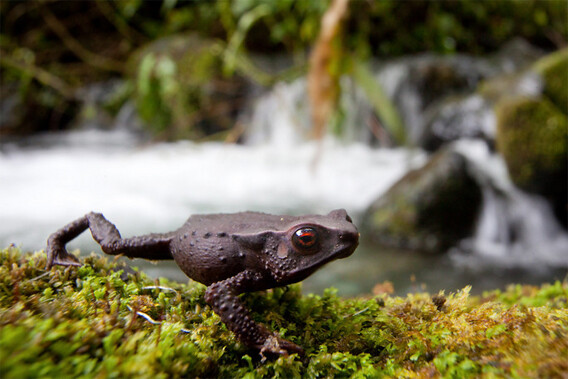
(New toad species with red eyes, Columbia, 2010)
Mongabay.com said “This highly unusual species has scientists baffled – we know nothing about this species other than where it lives”.
Where “unusual”, “baffled” and “we know nothing” are examples of the propaganda technique known as “stonewalling”.
National Georgraphic said that they were “found during the “Search for Lost Frogs”, which clearly states that the three species had been out there in the rainforests of Choco department in Columbia all along, only nobody had looked for them with the proper skill or assiduousness previously.
In December 2010, after an absence of ten years, the Swansiona plant winked back into existence in New South Wales, Australia.
From 2011 to 2017, the swordfish in the Gulf of Mexico increased in size by 29%, from 341 pounds (Texas) to 242 pounds, 8.64 ounces (Mississippi). That’s an average annual increase in size of 4.8% per year over each of those six years.
From 2011 to 2014, water clarity in Caspian Lake, Vermont increased by 26.3%, from 9.1 meters to 11.5 meters.
From 2011 to 2014, the average annual increase in water clarity in Caspian Lake, Vermont was 8.7%.
From 2011 to 2014, water clarity in Lake Tahoe increased by 13%, from 68.9 feet to 77.8 feet
From 2011 to 2012, water clarity in Lake Tahoe, California increased by 9.2%, from 68.9 feet to 75.3 feet.
From 2011 to 2012, the 9.2% increase in water clarity in Lake Tahoe was 736% above the baseline average annual increase in clarity of 1.25% per year documented in Lake Tahoe from 1997 to 2014.
From 2011 to 2013, the Texas state record swordfish increased in size by 45%, from 341 pounds to 493 pounds. That’s an average annual increase in size of 22.5% per year over each of those two years.
From 2011 to 2013, the 22.3% and 22.5% average annual increases in size of the Mississippi and Texas state record swordfish were statistically identical.
From 2011 to 2012, the average margins between fish records in this study increased by 17.4%, from 2.3% to 2.7%.
In 2011, the swordfish suddenly appeared in the Gulf of Mexico off Texas, for the first time in the state’s history; the Texas state record swordfish weighed 341 pounds.
In 2011, after an absence of four years, the swordfish suddenly reappeared in the Gulf of Mexico at a weight of 314 pounds (Texas state record), which was 354% greater than the 75 pounds at which it had last manifested there in Mississippi.
Wait, what? The swordfish in the Gulf of Mexico suddenly well more than quadrupled in size from 2007 to 2011. Here we see the Death energy matrix broken by the slow, steady, widespread and ever-increasing distribution of simple, inexpensive Orgonite devices.
I’ll have to go back into the old Etheric Warrior records…there was a gifted doing a lot of work down in that neck of the woods, whose name I cannot recall at this moment. They were on the Gulf coast.
In 2011, after an absence of over one hundred years, the red-crested tree rat (Santamartamys rufodorsalis) winked back into existence in Columbia.
Phys.org said “not seen since 1898, despite several organized searches, bizarrely ’showed up at the front door of an ecolodge at a nature reserve in Colombia, South America.”
Where “bizarrely” is an example of the propaganda technique known as “stonewalling”.
With “not seen since” and “organized searches” stating that the guinea pig-sized rodent had been out there in Colombia, all along, only nobody had looked for it with the proper skill or assiduousness, previously.
In 2011, after an absence of over fifty years, the Keruing Jarang Tree suddenly reappeared in Malaysia for the first time since 1955.
In 2011, after an absence of over thirty years, the Omaniundu Reed Frog suddenly reappeared in the Congo for the first time since 1979.
In 2011, after an absence of over twenty years, Magnolia ekmanii suddenly winked back into existence in Grand Bois national park in south-west Haiti, for the first time since 1985.
From 2012 to 2013, the average margins between fish records in this study decreased by 18.5%, from 2.7% to 2.2%.
In 2012, after an absence of twelve years, the blue catfish suddenly reappeared in Kansas, for the first time since 2000.
In 2012, the giant lacewing suddenly winked into existence in Arkansas for the first time in history. It had been extinct in the Eastern United States for over fifty years.
Michael Skvarla, Director of Pennsylvania State University’s Insect Identification Lab, sat on the discovery for over a decade, until he announced it in 2023. He said it was “interesting” and that he had “forgot about it”.

(giant lacewing, which suddenly winked into existence in Arkansas for the first time in history in 2012. It had been extinct in the Eastern United States for over fifty years.)
On September 1, 2012, after a 34-year absence, the swordfish suddenly reappeared in the Atlantic Ocean off Virginia for the first time since 1978 at a weight of 446 pounds.
On some obfuscated date in October 2012, Mark Foster caught the West Virginia state record blue catfish, in the Ohio River. It weighed 44.5 pounds and was 43.9 inches long.
In October 2012, the West Virginia Division of Natural Resources Director Frank Jezioro said that Mark Foster “broke his own 2011 record catch of 32.28 pounds.”
When, in fact, there are no independent news stories corroborating this 2011 record, nor, here in the digital era, are there any photographs of this largest-in-history blue catfish.
The claim is false. It was put forward to, er, muddy the water, and chop up the gigantic, historically-unprecedented increase in size of the West Virginia state record blue catfish from 2009 to 2012.
From 2013 to 2023, the Washington state record mahi mahi increased in size by 25.4%, from 16.27 pounds to 21 pounds.
Such records are usually broken by tiny margins. Yet, here, the record stood for a decade, and then was broken by an exponential margin.
That’s not scientifically possible, at least not according to the rapidly-collapsing false Orthodoxy which holds that organisms increase in ever-smaller increments to a genetically-programmed maximum size, and that there is “no such thing as the ether”.
The truth is that the size, fertility, longevity and very existence of any organism vary directly with the health of its etheric environment.
From 2013 to 2018, 1-Hour Sulfur Dioxide (SO2) Design Values for Brown County, Wisconsin decreased by 84% from 2013 to 2018, or reduced by nearly half, from 75 parts per billion to 12 parts per billion.
From August 2013 to July 2016, the Texas unrestricted state record swordfish increased in size by 9.9%, from 374.8 pounds to 412 pounds. Mysanantonio.com’s Kelsey Bradshaw omitted the percentage, and said only-generally that the new record “broke” the old. That’s an average annual increase in size of 3.3% per year over each of those three years.
If fish size varies directly with the health of the ether, then the health of the ether in the Gulf of Mexico increased by an annual average of 3.3% from 2013 to 2016.
From 2013 to 2014, the swordfish in the Gulf of Mexico increased in size by 192%, or basically tripled in size, from 374.8 pounds (Texas unrestricted) to 972.7 pounds (Texas).
From 2013 to 2014, the 192% increase in size of the swordfish in the Gulf of Mexico was 742% greater than its 22.8% average annual increase in size there from 2011 to 2013. The growth rate of the swordfish in the Gulf of Mexico has increased exponentially, going forward in time.
That’s not scientifically possible, at least not according to the Orthodoxy of mean-spirited Western rationalism, which holds that species grow in successively smaller increments to a genetically-determined maximum size, and that “there is no such thing as the ether”.
The growth rate is increasing exponentially going forward in time because the etheric environment in the Gulf of Mexico is improving exponentially, driven by the slow, steady, widespread and ever-increasing distribution of simple, inexpensive Orgonite devices based upon the work of Wilhelm Reich and Karl Hans Welz.
From 2013 to 2014, water clarity in California’s Lake Tahoe increased by 10.2%. Researchers from U.C. Davis said it was because of “the drought creating less runoff from surrounding developments”.
In 2013, after an absence of over 100 years, the Crambione Cookii Jellyfish suddenly reappeared in Australia for the first time since 1910.
In 2013, after an absence of almost 100 years, the black jellyfish suddenly reappeared in Southern California for the first time since 1920.
In 2013, the mahi mahi, or dorado winked into existence in the Pacific ocean off the state of Washington, as the etheric environment improved to a point where the species could manifest there.
The Spokesman’s Rich Landers said that it was because of “warmer waters”.
In 2013, sea otters and seagrass reappeared in the Elkhorn Slough in California.
In 2013, 40 species which had been extinct in Europe reappeared, including the lynx, the Iberian Imperial eagle, the white stork, the griffon vulture, the ibex and the Eurasian beaver all suddenly reappeared in Europe.
In October 2013, directly in the face of wildlife of all stripes rebounding across Europe, the New York Times said “A Rebound for Some Wildlife in Europe”.
The article goes on to say “The study found that nearly 40 species, including white storks, griffon vultures and ibex, have made strong comebacks from low numbers in the past century. The once rare Eurasian beaver, which now is thought to number more than 300,000 in Europe alone, showed the strongest recovery of all.”
Since you are studying this boring subject with me, you know that Beavers suddenly reappeared in England at this same moment. What “conservation efforts” led to the sudden, simultaneous reappearance of Beavers in Europe and the U.K.?
The article goes on to say “When you eliminate threats, species are happy to come back,” said Monika Böhm, a researcher at the Zoological Society of London. “But you need to keep in mind that the big picture is not a good one.”

(Monika Bohm, Researcher, Zoological Society of London, in Satanic purple fleece with a Satanic green background)
Monika Bohm, a researcher at the Zoological Society of London, looks straight-up evil in that photograph, doesn’t she? That’s because she is. She’s a generational Satanist Freemason shill, parroting the Party line of mean-spirited Western materialism.
Most unfortunately for Monika and her fellow Conspirators, the big picture is a very good one, and life is booming and burgeoning to levels of health not seen in my lifetime, or anyone’s, going back for many generations.
Shill - noun - an accomplice of a hawker, gambler, or swindler who acts as an enthusiastic customer to entice or encourage others
Can you see how the picture is constructed to give prominence to Monika’s left eye? That’s because, to followers of the Left-hand path, the left eye is the “eye of Will” or the “eye of Horus”.
But don’t take my word for it:
‘The right eye is the Eye of Ra and the left is the Eye of Horus’.”
From “Freemasonry - Religion And Belief - The 3rd Temple”
Facebook: “Welcome to the Left-Hand-Path- Network, where Satanism is not about worship, but it’s study.”
I have included Monika’s photograph so that you could get a better idea of what a generational Satanist Freemason in a position of marginal influence looks like.
She figured that the rubes would never notice the coded visual imagery.
They are all related to one another through the maternal bloodline. They comprise between twenty and thirty percent of the populace, and are hiding in plain sight in every city, town and village on Earth. It’s how the few have controlled the many all the way back to Babylon, and before.
But they say that the hardest part of solving a problem is recognizing that you have one.
Don Croft used to say “Parasites fear exposure above all else”.
In 2013, after an absence of almost forty years, the striped bass winked back into existence in New Jersey for the first time since 1982.
In 2013, after a twenty year absence, the American lobster winked back into existence in the Atlantic Ocean off New Jersey for the first time since 2003. New Jersey landings of the American lobster totaled over $2.2 million in 2015, yet it is still being artificially-portrayed by the State of New Jersey as “extinct” with a “retired” record.
In 2013, after an absence of over a decade, the hybrid striped bass reappeared in the Atlantic Ocean off New Jersey for the first time since 2004.
From 2013 to 2014, the average margins between fish records in this study increased by 49.9%, from 2.2% to 3.2%.
From 2013 to 2014, water clarity in Lake Tahoe increased by 10.2%, from 70.2 feet to 77.8 feet. That’s the largest one-year increase in clarity in the data set, and it’s 816% above the baseline average annual increase in clarity of 1.25% per year documented in Lake Tahoe from 1997 to 2014.
U.C. Davis researchers attributed the largest increase in clarity in the history of Lake Tahoe to “the drought”.
It’s significant to note that, in 2014, Lake Tahoe’s clarity of 77.8 feet was second only to the historical high of 78 feet seen in 2002. 2002 is right when the literal forest of what we call “wireless communications infrastructure” was thrown up suddenly virtually overnight in every city, town and village on Earth.
In October 2013, qz.com Satanically inverts a jellyfish population booming and burgeoning to unprecedented health as “ Jellyfish are taking over the seas, and it might be too late to stop them ”.
From 2014 to 2021, strong evidence of cyanobacteria blooms on Lake Kegonsa in Wisconsin decreased by 25%, from 14% to 10.5%
From 2014 to 2015, the average increase in size of fish in this study increased by 21.9%, from 3.2% to 3.9%.
In 2014, after an absence of over 130 years, the webless shrub frog (Pseudophilautus hypomelas) suddenly reappeared in Sri Lanka for the first time since 1876.
In 2014, after an absence of over thirty years, the sandbar shark suddenly reappeared in the Atlantic Ocean off New Jersey for the first time since 1987.
In 2014, after an absence of 26 years, the blue marlin in Texas suddenly reappeared at a weight of 972.7 pounds, which was 11% greater than the 824 pounds at which it had last manifested in the state in 1988.
In 2014, the barracuda suddenly reappeared in the Atlantic Ocean off New Jersey, at a size 37% greater than it manifested at previously in 1991.
In 2014, after an absence of over twenty years, the sand tiger shark suddenly reappeared in the Atlantic Ocean off New Jersey for the first time since 1989.
In 2014, after an absence of over a decade, the stargazer winked back into existence in the Atlantic Ocean off New Jersey for the first time since 2000.
In 2014, after an absence of over twenty years, the chub mackerel suddenly reappeared in the Atlantic Ocean off New Jersey for the first time since 2002. Yet at this writing in 2023 it is still being artificially-portrayed by the State of New Jersey as “extinct” with a “retired” record.
From April 26, 2014 to May 4, 2016, the West Virginia state record blue catfish increased in size by 12.8%, from 52.95 pounds to 59.74 pounds.
Biologist Scott Morrison said “We suspect records for a new fish like this is going to be broken quite a lot. However, this time it wasn’t broken by just a pound or so, it was broken by a considerable amount.”
That is a very unscientific, general explanation of the sudden, exponential increase in size of the blue catfish in West Virginia.
Scott betrays himself when he says “a new fish like this”. Later in the same article, he says that the blue catfish is native to West Virginia. Yet, here, he says that it is “new”. Why?
He’s stumbling, falling all over himself, trying to obscure the sudden winking into existence of the blue catfish in West Virginia.
On April 26, 2014, Austin Hoffman, of Cabell County, West Virginia, caught the West Virginia state record blue catfish. It weighed 52.95 pounds, and was 47.75 inches long.
From April 26, 2014 to May 25, 2022, the West Virginia state record blue catfish increased in length by 6.1%, from 47.75 inches to 50.7 inches.
On April 30, 2014, wvmetronews.com’s Chris Lawrence said “Although a native fish to West Virginia’s big rivers the blue cats were largely eliminated by the construction of the locks and dams on the rivers decades ago. Five years ago, the West Virginia Division of Natural Resources engaged in a program to restore them with great results.”
Where the general “a program” and “great results” are pure propaganda. What program? When, specifically, was it implemented? What were its scientifically quantified results?
It is a bullshit plausible-deniability excuse, put forward at the local level to obscure the fact that the blue catfish is winking back into existence regardless of geography.
From 2015 to 2018, water clarity in Iowa’s storm lake was said to have “increased”. DNR Fisheries Biologist Ben Wallace said “it’s likely a combination of all the improvement projects that we’ve done, things that you see goin’ on in the watershed, we’ve done some dredging, the city…Storm Lake has done some, uh, improvement, uh, projects, weather patterns and in lower rough fish numbers, and we can’t, uh, assign, like, one foot of clarity is from dredging, one foot of clarity is from our little Storm Lake project, likely, in any given year, they’re having a different effect, based on the weather and water levels and stuff, but that was the goal of doing all these works, that what we’ve invested so much in over these past fifteen to twenty years, it’s to improve water quality.”
In 2015, the blueline tilefish winked into existence in the Atlantic Ocean off Delaware for the first time in history. It weighed 19.7 pounds.
From 2015 to 2022, the Delaware state record blueline tilefish winked into existence and then increased in size by 29%, from 19.7 pounds to 25 pounds, 8 ounces.
Wait, what? Such records are usually broken by tiny margins, according to the Orthodoxy which holds that organisms increase in ever-smaller increments to a genetically-programmed maximum size. Yet, here, the record stood for just seven years, and then was suddenly broken by an exponential margin.
The truth is that the size, fertility, longevity and very existence of any organism vary directly with the health of its etheric environment.
In 2015, the cisco, or lake herring, suddenly appeared in Vermont for the first time in the state’s history.
In 2015, otters considered “extinct” suddenly reappeared on England’s River Otter for the first time in over 500 years.

(Beavers that suddenly reappeared on the River Otter in England in 2015 for the first time in 500 years.)
In 2015, after an absence of over seventy years, Jerdon’s Babbler, considered “extinct”, suddenly reappeared in Myanmar for the first time since 1941.
In 2015, lake trout suddenly began reproducing in numbers in Vermont’s Lake Champlain.
From 2015 to 2016, the average margin between fish records in this study increased by 5.1%, from 3.9% to 4.1%.
From 2015 to 2016, water clarity in California’s Lake Tahoe decreased by 6%. Researchers from U.C. Davis said that a 6% decrease in water clarity in Lake Tahoe was caused by “Warmer water and lack of snow”.
Essay: Explain how drought increased water clarity increased water clarity in Lake Tahoe by 10.2% in 2013 and decreased water clarity there by 6% in 2015.
Answer: The folks in charge are not your friends, and are lying to you about basically everything, including the drivers of water clarity in Lake Tahoe.
From 2016 to 2020, the 1.25% average annual decrease in Ozone in Brown County, Wisconsin was statistically very similar to the 1% decrease in Ozone in China in 2021.
From 2016 to 2020, 8-hour Ozone design values in Brown County, Wisconsin decreased by 5%, from 65 parts per billion to 62 parts per billion. that’s an average decrease of 1.25% over each of those 4 years.
In 2016, the blue catfish suddenly appeared in Colorado for the first time in the state’s history.
In 2016, after an absence of fifty years, Basilewski’s Cranefly, suddenly reappeared on St. Helena Island in the South Atlantic for the first time since 1966.
In 2016, after an absence of almost twenty years, Spix’s macaw suddenly reappeared in Brazil for the first time since 2000.
In 2016, after an absence of over fifteen years, the Spix’s macaw winked back into existence in Brazil for the first time since 2000.
In 2016, the News-Press said “Turquoise-blue water appears … in New Jersey”.

(Caribbean-blue water suddenly appears in New Jersey for the first time in history, 2016.)
The uncredited author said it was because of “a phytoplankton bloom and a drought across much of the Northeast has caused the waters of the southern Jersey Shore to look more tropical than at any time in recent memory. The phenomenon has been going on for 10 days, and will continue for as long as wind patterns allow it.”
For those unaware, anytime an author is uncredited, it is proof that said author is an Intelligence operative.
NOAA.gov says “Precipitation averaged across the continental United States in 2016 was 31.70 inches, 1.76 inches above (or 6% above - ed) the 20th century average. This was the 24th wettest year on record”.
I have exposed the duplicity of the uncredited Intelligence operative from the State propaganda organ known as the News-Press by using what was known in the old days as “fact checking”.
From 2016 to 2017, the average margins between the fish records in this study increased by 53.7%, from 4.1% to 6.3%.
From 2016 to 2017, egg production at the hatchery on Storm Lake, Iowa increased by 14%.
From 2016 to 2017, water clarity in California’s Lake Tahoe decreased by 12%. Researchers from U.C. Davis said that a 12% decrease in clarity in Lake Tahoe was due to “record snow and rain”.
From May 14, 2016 to April 8, 2022, the West Virginia state record blue catfish increased in size by 2.6%, from 59.74 pounds to 61.28 pounds.
On May 14, 2016, Mark Blauvelt caught the West Virginia state record blue catfish, in the Ohio River. It weighed 59.74 pounds and was 44.88 inches long.
From 2017 to 2022, the Mexican wolf population in Arizona and New Mexico more than doubled .
From 2017 to 2022, the Delaware state record blue catfish increased in size by 90%, or almost doubled in size, from 25 pounds, 5.6 ounces to 48 pounds, 3.2 ounces.In 2018, after an absence of almost fifty years, the blue catfish suddenly reappeared in Nebraska for the first time since 1970.
From 2017 to 2021, the water clarity of Lake Wingra in Wisconsin increased by 45%, from 70.5 centimeters to 102 centimeters.
From 2017 to 2020, the Georgia state record blue catfish increased in size by 18.6%, from 93 pounds to 110 pounds, 6 ounces.
From 2017 to 2018, water clarity in California’s Lake Tahoe increased by 14%, the largest one-year increase in history.
Capradio.org omitted the percentage, and said that Lake Tahoe’s water clarity “jumped 10 feet”. UC Davis researchers attributed the 14% increase, the largest in the history of the Lake, to “end of drought”.
From 2017 to 2018, the average margin between fish records in this study decreased by 38%, from 6.3% to 3.9%.
In 2017, a completely new species of jaguar suddenly appeared in Cochise County, Arizona.
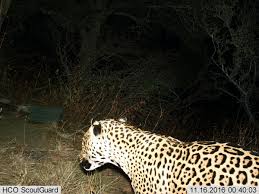
(New species of Jaguar, which suddenly appeared in Arizona in 2017, as the health of the etheric environment there recovered to a point where it could manifest there.)
In 2017, a new species of cave loach suddenly appeared in Europe for the first time in history.
In 2017, the Tippecanoe darter winked into existence in Alum Creek in Ohio. It was the first time the species had ever been documented there.
Now, let’s take a look at the Tippecanoe Darter, and you tell me if you think everybody just missed it up until now:
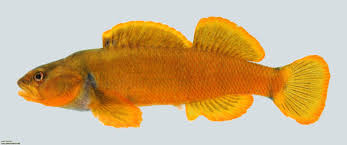
(Tippecanoe Darter, which suddenly appeared in Alum Creek in Ohio in 2017 for the first time in history, as the health of the ether improved to a point where it could manifest there)
In 2017, after an absence of over three hundred years, the Hoodwinker sunfish suddenly reappeared in the Pacific Ocean off New Zealand.
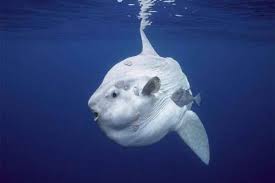
(Hoodwinker sunfish, which suddenly appeared in the waters off New Zealand in 2017 after an absence of 300 years)
In 2017, after an absence of over 250 years, the European bison suddenly reappeared in Germany.
In 2017, after an absence of over 150 years, the Fisher suddenly reappeared in Cochise County, Iowa for the first time since the mid-1800’s,
In 2017, after an absence of 130 years, the guinea pig-sized Oriental blue clearwing moth suddenly reappeared in Malaysia.

(Guinea pig-sized Oriental Blue Clearwing Moth, which suddenly winked back into existence in Malaysia in 2017 after 130 years, as the etheric environment once again returned to a state of health sufficient for it to manifest there)
As an aside, I’d note here that the great size of “the dinosaurs” was not due to the ludicrous “higher oxygen content of the atmosphere”, or “Darwinism”, as falsely alleged, but rather because the healthier etheric environment supported larger examples of the lifeforms. Ergo:

(Meganeuropsis permiana)
Coincidence Theorists wishing to test out of this section of this course must submit an essay documenting how or why gigantic size was crucial to the evolution of the species (a la Darwin) in the past, but is no longer crucial for dragonflies at this time. The use of “higher oxygen levels in those days” is not acceptable, as putting generations of dragonflies in a higher-oxygen environment does not increase their size by orders of magnitude, or by any magnitude whatsoever.
In 2017, after an absence of over 110 years, the Tennessee logperch darter suddenly reappeared in Tennessee for the first time since 1890.
In 2017, after an absence of over 100 years, the cusk eel, or “faceless fish” suddenly reappeared in Australia for the first time since the late 1800’s.
(Cusk Eel, which suddenly appeared in Australia in 2017 after an absence of over 100 years, as the etheric environment there returned to a state of health where it could once again manifest within it)
In 2017, for the first time in over 100 years, wild wolves suddenly reappeared in Rome, Italy.
In 2017, after an absence of eight years, the Albany Adder suddenly reappeared in South Africa for the first time since 1937.
In 2017, after an absence of over seventy years, Vanzolini’s bald-faced saki suddenly reappeared in the Amazon for the first time since the 1930’s.
In 2017, after an absence of over fifty years, the cave squeaker frog Artholeptis troglodytes suddenly reappeared in Africa for the first time since 1962.
In 2017, after an absence of fifty years, the New Guinea highland wild dog, considered “extinct”, suddenly reappeared in New Guinea for the first time since 1967.
In 2017, after an absence of over 40 years, the blackfin cisco suddenly reappeared in the Great Lakes for the first time since the 1960’s.
In 2017, after an absence of almost forty years, the black-striped wallaby suddenly reappeared in Australia for the first time since 1981.
In 2017, after an absence of over thirty years, the Alligator snapping turtle, suddenly reappeared in Illinois for the first time since 1984.
In April 2017, the blue catfish winked into existence simultaneously in Nebraska and the Chesapeake Bay.
In April 2017, the blue catfish winked into existence in Nebraska. It weighed at least 90 pounds, probably 100. It was caught by Mike Ohara.
In April 2017, the blue catfish winked into existence in the Chesapeake bay for the first time in history, at a threshold weight of 25 pounds, 5.6 ounces.
From 2018 to 2021, the blue catfish in Nebraska increased in size by 20.3%, from 113 pounds to 136 pounds.
From June 2018 to June 2020, the number of days with one or more reports of strong cyanobacteria blooms each month across all Yahara lakes decreased by 68%, from 25 to 8.
From 2018 to 2019, the average margins between fish records in this study decreased by 43.6%, from 3.9% to 2.2%.
From 2018 to 2019, water quality in Lake Tahoe increased by 17%, to the highest level in history. It was the biggest one-year improvement since they began keeping records there 50 years ago.
In 2018, after an absence of over seventy years, the ivory-billed woodpecker suddenly winked back into existence in Louisiana for the first time since 1944.
In 2018, the blue catfish winked into existence in Nebraska for the first time in history, in the Missouri River, when Mike Ohara caught a blue catfish with setlines. It weighed 113 pounds. It is the first example of the blue catfish in Nebraska in history for which independent media verification and photographs exist.
The USGS table for the blue catfish does not include Mike Ohara’s catch in the Missouri River in Nebraska in 2018. Why?
From 2019 to 2020, the number of birds at Sambhar lake in India increased 3,032%, and the species count there increased by 55%.
In 2019, after an absence of 136,000 years, the Aldabra rail winked back into existence on the Aldabra Atoll in the Indian Ocean.
CBS News’ Sophie Lewis said that it was because of “iterative evolution”, where “species can re-emerge over and over, despite past iterations going extinct.”
Wait, what? Darwin’s “theory of evolution” claims, pathetically enough, that one species evolves, slowly, inexorably into another. Yet, here, a new faux-science meme is piled on top of that, “where the species can re-emerge over and over”. How, pray? By what mechanism?
It’s a steaming load of bullshit.
We really are in the Punch and Judy tent.
The article goes on to say “We know of no other example in rails, or of birds in general, that demonstrates this phenomenon so evidently,” co-author professor David Martill, a paleobiologist at the University of Portsmouth, said. “Only on Aldabra, which has the oldest palaeontological record of any oceanic island within the Indian Ocean region, is fossil evidence available that demonstrates the effects of changing sea levels on extinction and recolonization events.”
Here’s Sophie Lewis’ picture, in a Satanic purple top against a Satanic green background:

(CBS News’ Sophie Lewis, who said that after an absence of 136,000 years, the Aldabra rail winked back into existence on the Aldabra Atoll in the Indian Ocean because of “iterative evolution”, where “species can re-emerge over and over, despite past iterations going extinct.” It’s an example of the “Big Lie” so favored by Hitler, Goebbels, and smalltown Mayors the world over.)
I have included Sophie Lewis’ picture so that you could get a better idea of what a generational Satanist Freemason in a position of marginal influence looks like.
She figured that the rubes would never notice the coded visual imagery.
They are all related to one another through the maternal bloodline. They comprise roughly twenty percent of the populace, and are hiding in plain sight in every city, town and village on Earth.
It’s how the few have controlled the many all the way back to Babylon, and before.
But they say that the hardest part of solving a problem is recognizing that you have one.
Don Croft used to say “Parasites fear exposure above all else”.
In 2019, the Hawaiian petrel, one of only two endemic Hawaiian birds, and thought to be extinct in the Hawaiian Islands for hundreds of years, suddenly reappeared on Oahu.
In 2019, Newell’s shearwater, the second of the only two endemic Hawaiian birds, and also thought to be extinct in the Hawaiian Islands for hundreds of years, also suddenly reappeared on Oahu.
In 2019, the Ozark chestnut tree winked back into existence in Missouri for the first time in over seventy years.
Saveplants.org says “Like the famous American chestnut of the Appalachian Mountains, Ozark chinquapin was decimated by the chestnut blight that was accidentally introduced into North America in the early part of the last century.
Where the What To Think plant-saver website walked the specific “Chinese chestnut blight” back to the general “the chestnut blight”, and where “accidentally introduced” states, with a straight face, that the Chinese did not introduce it deliberately.
In 2019, after an absence of over 40 years, the swordfish winked back into existence in the Gulf of Mexico off Lousiana at a weight of 328.4 pounds, which was % less than the
In 2019, after an absence of almost forty years, the Megachile pluto, commonly known Wallace’s giant bee, winked back into existence in Indonesia for the first time since 1981.
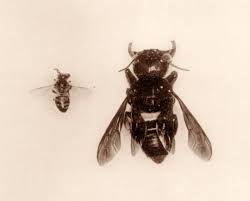
(Wallace’s Giant Bee)
In 2019, after an absence of 20 years, the cobia winked back into existence in the Atlantic Ocean off New Jersey for the first time since 1999.
In 2019, after an absence of almost twenty years, the cutlass fish reappeared in the Atlantic Ocean off New Jersey for the first time since 2002.
In 2019, after an absence of ten years, the hibiscadelphus wood hibiscus suddenly reappeared on the Island of Oahu for the first time since 2009.
In 2019, after an absence of ten years, the Hibiscadelphus woodii plant winked back into existence in Hawaii for the first time since 2009.
In 2019, the second cisco, or lake herring, ever documented in Vermont suddenly appeared in Lake Champlain. It weighed 2 pounds, 4 ounces, and was 106% larger, or over twice as large as the only other example of the species ever caught in Vermont, the 1.09 pound fish from 2015.
In 2019, the barracuda appeared in the Atlantic Ocean off Delaware for the first time in history.
The Maryland Department of Natural Resources said “We consider this to be a rare summer stray which may have wandered a little off course .”
In 2019, water quality in the Chesapeake Bay was the highest since record keeping began.
In 2019, Thailand’s Mekong River suddenly became clear.
In 2019, researchers from U.C. Davis said that a 17% increase in water clarity in Lake Tahoe was caused by “end of drought”.
Essay: Explain how record snow and rain in decreased water clarity in Lake Tahoe by 12% in 2016 and increased water clarity there by 17% in 2019.
Answer: The researchers fro U.C. Davis are bloodline-linked generational Satanists, using conscious deception while retaining the firmness of purpose that goes with complete honesty.In 2018, the water clarity increase in Minnesota’s Lake Winnibigoshish was said to be “rapid and astounding - more than doubling, from 6-7 feet to 14 feet and more now.” The clarity increase in Storm Lake was attributed to “zebra mussels”.
From 2019 to 2020, European reporting stations that registered concentrations above the EU daily limit value of 50 ug/m3 decreased by decreased by 28.3%, or decreased by almost one third, from 14% to 10%.
From 2019 to 2020 the average margins between fish records in this study increased by 27%, from 2.2% to 2.8%.
From 2019 to 2020, European reporting stations that registered concentrations above the WHO long-term guideline of 20 ug/m3 decreased by 21% from 43% to 34%.
The uncredited author from eea.europa.eu said sudden, exponential increase in air quality in Europe in 2019 was due to “The apparent improvement in the situation in 2020, with lower concentrations of PM10, PM2.5 and NO2, is partly due to the lockdown measures implemented during the outbreak of the COVID-19 pandemic.”
In February 2019, Eric Hebert, Alex Negulescu and Chris Negulescu landed a 328.4-pound broadbill swordfish in the Gulf of Mexico off Louisiana. It was ineligible for recognition because it was harvested with an electric reel. Given that the purported Louisiana state record swordfish from 1980 is not supported by independent media corroboration or photographs, from 1977 to 2019, the swordfish was absent from the record in the Gulf of Mexico off Louisiana.
In 2020, the water in the canals of Venice suddenly became clear.
From 2020 to 2021, ice cover days on Lake Mendota in Wisconsin increased by 9%, from 70 days to 77 days. The uncredited author from the Clean Lakes Alliance described it as “only seven days longer”, and that “the winter leading into the 2021 summer monitoring season was relatively warm.”
Essay: explain the geophysical mechanisms by which a “relatively warm winter” in 2020/21 caused a 9% increase in ice cover days in Lake Mendota in Wisconsin from 2020 to 2021.
In March 2020, CNN said “Venice’s canal water looks clearer as coronavirus keeps visitors away”.
Here’s a picture from the article:

(Suddenly-clear canals in Venice, Italy, 2020)
Numerous “the dog ate it!” ruses are currently in play posturing that the engineered virus recently released upon the populace is responsible for all manner of things, including the collapsing smart phone industry, and the collapsing electric car industry, to name only two of many others. As you can see from the headline up above from Venice, Italy, it’s also claimed to be responsible for increasing the water clarity, there.
Well, in this case, it’s not the virus, per se. It is being claimed that the recent virus-related lack of activity on Venice’s canals has caused sediment levels in them to drop, clarifying the water. That’s, well, plausible. And it is, in fact, a half-truth. And half-truths are the engine of propaganda.
The decrease in activity and related drop in churned-up sediment are real, but are merely incremental in impact, rather than quantum, as alleged. It’s a local plausible-deniability excuse, put forward to keep your eyes off the larger trend I’m elucidating here.
In October 2017, Richard Barnett caught the Georgia state record blue catfish, in the Altamaha River. It weighed 93 pounds.
In 2020, Tim Trone caught the Georgia state record blue catfish. It weighed 110 pounds, 6 ounces.
In July 2021, the swordfish suddenly appeared in the Atlantic Ocean off the state of Maryland for the first time in the state’s history; the first-ever Maryland state record was caught by Peter Schulz, and weighed 301 pounds.
The news.maryland.gov article that I got that data from goes on to say “Annapolis resident Peter Schultz, 36, is the first record holder for the Atlantic division – Swordfish (Xiphias gladius). Schultz caught the 301-pound swordfish while participating in the Big Fish Classic Tournament, landing the record-breaking catch roughly 50 miles offshore at Washington Canyon.”
Record-breaking catch, wait, what? There are no swordfish records in the state of Maryland prior to 2021. Here, the uncredited Intelligence operative from news.maryland.gov bald-fadedly lies that some record was broken, when, in fact, there was no record to be broken. I have exposed their duplicity by using what was known in the old days as “fact checking”.
News.maryland.gov attributed Maryland’s first-ever swordfish record the fact that “Deep dropping for swordfish has gained in popularity over the last few years, resulting in more catches of large swordfish.”
Where the largest (and only) swordfish in the history of the state of Maryland has been walked back to merely “large”, and included with numerous-but-unnamed others.
Since we’re studying the subject in a scholarly way, we know that, “Modern deep drop, daytime swordfishing is attributed to the Stanczyk team fishing out of Bud and Mary’s Marina in Islamorada, Florida”. And we know, further, that, in 2003 the Stanczyk team in Islamorada, Florida caught their first swordfish there.
I have once again exposed the duplicity of Maryland.gov by using what was known in the old days as “fact checking”.
If you think that it took almost twenty years for the technique of deep dropping for swordfish to make it from Florida to Maryland, there’s a bridge for sale in Brooklyn that I think it might profit you to look at.
In 2021, after an absence of almost 40 years, the tarpon suddenly reappeared in the Atlantic Ocean off New Jersey for the first time since 1982.
In 2021, the huge, iridescent green beetle that would later be named Bembidion brownorum suddenly winked back into existence in California after an absence of over fifty years.
In 2022, the 67% survival rate of Mexican wolf pups was 34% greater than the long term average of 50%. Jim deVos, Mexican wolf coordinator with the Arizona Game and Fish Department, said it was “monster”, and "that says the health of the population is good, both the physical health and the genetic health.”
Where Jim walked the great health of the population back to merely “good”, and implied that it was “just genetics”.
From 2021 to 2022, water clarity in Calfornia’s Lake Tahoe increased by 32%, from 61 feet to 80.6 feet, to the highest level since the 1980’s. The Tahoe Environmental Research Center said it was because of “zooplankton”.
From 2021 to 2022, the 32% increase in water clarity in Lake Tahoe was 88% greater, or almost double its 17% increase in clarity from 2018 to 2019.
From 2021 to 2022, the Mexican wolf population in New Mexico and Arizona increased by 23% , from 196 to 241. U.S. Fish and Wildlife Service Mexican wolf recovery coordinator Brady McGee didn’t offer any suggestion as to what might have caused the sudden, exponential increases in numbers. That’s an example of the propaganda technique known as “stonewalling”.
From 2021 to 2022, water clarity in Calfornia’s Lake Tahoe increased by 32%, from 61 feet to 80.6 feet, to the highest level since the 1980’s. It was the largest one-year improvement in clarity in history. The Tahoe Environmental Research Center said it was because of “zooplankton”.
From 2021 to 2022, air quality in China increased by 10%.
From 2021 to 2022, Ozone levels in China decreased by almost one percent.
Editor Li Yan said that the air quality in China increased suddenly and exponentially in 2021 because “the country continued its efforts to ensure air quality”.
In May 2021, Jake Stirek caught the Iowa and Nebraska state record blue catfish, in the Missouri River. It weighed 136 pounds.
At this writing in July 2024, the USGS table for the blue catfish does not include Jake Stirek’s Iowa and Nebraska state record blue catfish from May 2021. Why?
In 2022, six brand-new species of sticky, carnivorous sundew plants, including Drosera hortiorum and Drosera koikyennuruff winked into existence for the first time in history, in Australia. Somehow, professional horticulturists only found two, while lay people on walks found four.
In 2022, two sticky, carnivorous sundew plants known as Drosera rubricalyx and Drosera macropetala suddenly winked back into existence in Australia for the first time since the 1850’s.
In 2022, the dinner plate-sized atlas moth suddenly winked into existence in Washington state for the first time in history.
Here’s a picture of it:

(The dinner plate-sized atlas moth, which suddenly winked into existence in Washington state in 2022 for the first time in history)
In 2022, the first documented example of the blue catfish was caught in Idaho, for the first time in history, despite roughly 50,000 of them being stocked across nine locations all over the state in 1985.
In 2022, after an absence of 140 years, the black-naped pheasant pigeon winked back into existence in Papua New Guinea.
In 2022, after an absence of 110 years, the snout moth winked back into existence in the Philippines.
In 2022, after an absence of over one hundred years, the whorled pagonia orchid suddenly winked back into existence in Vermont for the first time since 1902
In 2022, after an absence of over one hundred years, Magnolia pallescens, Magnolia domingensis and Magnolia hamorii all suddenly winked back into existence in Haiti for the first time since 1925.
In 2022, after an absence of 43 years, the swordfish suddenly reappeared in the Atlantic Ocean off North Carolina at a weight of 504.5 pounds, 14% greater than the 445 pounds at which it had last manifested in 1979.
In 2022, after an absence of 44 years, the swordfish suddenly reappeared in the Atlantic Ocean off Florida, at a 767.8-pound weight 25.3% greater than the 612 pounds at which it had last been documented in 1978.
In 2022, after an absence of over thirty years, the white shark suddenly reappeared in the Atlantic Ocean off New Jersey, for the first time since 1988.
In 2022, after an absence of seventeen years, the tautog winked back into existence in Delaware, when the etheric environment there improved to the point where the species could once again manifest within it.
In 2022, the native Lake Trout population in Vermont’s Lake Champlain expanded exponentially. Department of Environmental Conservation biologist Nicole Balk said it was a "mystery ", and that “there are too many variables in the lake. We’d have to do quite a few studies to narrow it down
In 2022, the kokanee population in Idaho’s Payette Lake expanded exponentially.
In 2022, the Galapagos rail appeared on Pinzon Island in the Galapagos for the first time in history. Abc7news.com’s Julia Jacobo said that it was “now that the invasive predatory rodent species is gone.”
Who gave the Galapagos rail the all-clear? Where did they travel from, and when, and in what numbers?
We must recall that, as we learned above, in 2019, rails reappeared on Aldabra Atoll in the Indian Ocean for the first time in 136,000 years. Now, here, in 2022, rails appeared on Pinzon Island in the Galapagos for the first time in history.
In 2022, when the rails suddenly appeared on Pinzon Island in the Galapagos, why didn’t ABC7 News’ Julia Jacobo mention anything about “iterative evolution”?
And what happened to paleobiologist David Martill’s “we know of no other example in rails”?
I have exposed the duplicity of David Martill by using what was known in the old days as “fact checking”.
David overplayed his hand.
Julia has floated the queasy plausible deniability excuse of “now that the invasive predatory rodent species is gone” because she knows that many or most readers will grasp virtually any straw, no matter how thin, to remain off the hook of personal responsibility.
In 2022, after an absence of five thousand years, the gecko winked back into existence on Rabida Island in the Galapagos.
Paula Castrano, native species manager at Island Conversation, said "that they were likely present but in such small numbers that they weren’t able to track the populations.
Paula is reinforcing the false meme that the geckos were there on Rabida Island all along - for the past five thousand years - only nobody looked for them with the proper skill or assiduousness, previously.
In 2022, after an absence of some unmentioned period of time, the cactus finch winked back into existence on Rabida and Pinzon islands in the Galapagos.
Abc7news.com’s Julia Jacobo said they had been “reintroduced”, and that it was “ten years after the removal of an invasive rodent species”.
The claim is, well, plausible, however it doesn’t hold up well when the other reappeared species are taken into account.
But that’s how plausible-deniability works.
As a propagandist, Julia knows that many or most readers will grasp virtually any straw, no matter how thin, to remain off the hook of personal responsibility.
Here’s Paula Castano’s picture, in a Satanic green hat, and where she’s carefully positioned her head to focus attention on her left eye:
(Island Conversation’s Paula Castano, who said that the geckos were there on Rabida Island in the Galapgos all along for the past five thousand years, only nobody looked for them with the proper skill or assiduousness, previously. It’s an example of the “Big Lie” so favored by Hitler, Goebbels, and small town Mayors the world over.)
From April 8, 2022 to May 25, 2022, the 1.6% average weekly increase in size of the West Virginia state record blue catfish was 128.5% greater, or well more than double its .7% average weekly increase from May 4, 2016 to April 8, 2022.
The growth rate of the blue catfish in West Virginia is increasing exponentially going forward in time. That’s not scientifically possible, at least not according to the rapidly-collapsing false Orthodoxy which holds that organisms increase in ever-smaller increments to a genetically-programmed maximum size, and that there is “no such thing as the ether”.
The truth is that the size, fertility, longevity and very existence of any organism vary directly with that of its etheric environment.
From April 8, 2022 to May 25, 2022, the West Virginia state record blue catfish increased in size by a weekly average of 1.6%.
From April 8, 2022 to May 25, 2022, the West Virginia state record blue catfish increased in size by 9.7%, from 61.28 pounds to 67.22 pounds.
On April 8, 2022, Cody Carver caught the West Virginia state record blue catfish. It weighed 61.28 pounds.
From May 2022 to December 2023, the West Virginia state record blue catfish increased in size by 3.3%, from 67.22 pounds to 69.45 pounds.
On May 25, 2022, Steven Price, of Lancaster, West Virginia, caught the West Virginia state record blue catfish. It weighed 67.22 pounds and was 50.7 inches long.
From October 2022 to September 2, 2023, the Delaware state record blue catfish increased in length by 4.9%, from 40.5 inches to 42.5 inches.
In October 2022, the blue catfish winked into existence in Delaware, as the etheric environment improved to a point where it could manifest there. It weighed 48-pounds, 3.2-ounces, measured 40.5 inches long, and had a 30-inch girth.
The National Oceanic and Atmospheric Administration said that it was "invasive ", but did not mention where it had invaded from, or when.
In March 2023, the dusky tetraka bird suddenly winked back into existence in Madagascar for the first time since 1999.
Oxford University Ornithologist John Mittermeier said “If dusky tetraka always prefer areas close to rivers, this might help to explain why the species has been overlooked for so long.”
In March 2023, the gold-throated hummingbird, a completely new species, winked into existence for the first time in history in Peru.
In 2023, the walrus suddenly reappeared on the coast of Scotland for the first time in over 25 years, when the etheric environment there returned to a level of health where the species could once again manifest within it.
The size, fertility, longevity and very existence of any organism vary directly with the health of its etheric environment.
In 2023, the ‘fairy lantern’ plant, Thismia kobensis, suddenly winked into existence in Kobe, Japan for the first time in almost thirty years, when the etheric environment there returned to a level of health where the species could again manifest on this plane of existence.
The size, fertility, longevity and very existence of any organism vary directly with the health of its etheric environment.

(The fairy lantern plant, which winked back into existence in Kobe, Japan for the first time in almost thirty years.)
In 2023, the Puddingwife Wrasse winked into existence in North Carolina, as the etheric environment improved to a point where the species could manifest there, at a world-record weight of 3 pounds, 11 ounces, which was 5.4% larger than the previous world record holder from 2003.
Where “spotted one” falsely implies that the extinct spotted handfish had been out there in Tasmania, all along, only nobody had looked for it with the proper skill or assiduousness, previously.
Here’s a picture of it:
In 2023, after an absence of almost thirty years, the spotted handfish winked back into existence in Tasmania.
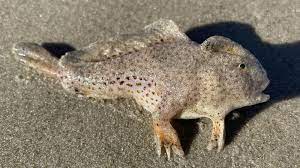
(The spotted handfish, which suddenly winked back into existence in Tasmania in 2023 for the first time in over thirty years)
On December 8, 2023, West Virginia’s Michael John Drake caught the West Virginia state record blue catfish. It weighed 69.45 pounds and was 50.51 inches long. 2023 was the fourth consecutive year in which the West Virginia state record for the blue catfish had been broken.
From September 2, 2023 to September 22, 2023, the 9.4% increase in size of the Delaware state record blue catfish was 1,780% greater than its .5% increase in size from 2022 to September 2, 2023.
The growth rate of the blue catfish in Delaware in increasing hyper-exponentially, going forward in time.
That’s not scientifically possible, at least not according to the rapidly-collapsing false Orthodoxy which holds that organisms increase in ever-smaller increments to a genetically-programmed maximum size, and that there is “no such thing as the ether”.
The truth is that the health of the ether is increasing, and the size, fertility, longevity and very existence of any organism vary directly with the health of its etheric environment.
From September 2, 2023 to September 22, 2023, the Delaware blue catfish state record increased in size by 9.4%, from 48 pounds, 7.2 ounces to 53 pounds.
In September 2023, the Victorian grassland earless dragon winked back into existence in Australia.

(Victorian grassland earless dragon)
In January 2024, an entirely new species of monstrous sea eel winked into existence in the Pacific Ocean off Australia.
(Entirely new species of monstrous eel which winked into existence in the Pacific Ocean off Australia in 2024)
Now here’s a picture of a Shrieking Eel from William Goldman’s film “the Princess Bride”, from 1987:
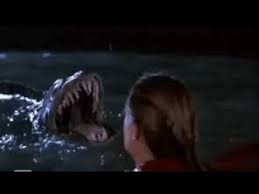
(Shrieking Eel from “the Princess Bride”, 1987)
Here’s a picture of the Australian eel, which is the length of the boat:
(Wider view of Australian sea monster eel)
In February 2024, the West Virginia Department of Natural Resources added six new species to the state record list: the redbreast sunfish, the redear, the pumpkinseed, the black crappie, the redhorse, and the tiger trout. However, they did not provide any reason as to why.
That is an example of the propaganda technique known as “stonewalling”.
In February 2024, Nathaniel Smith caught the first-ever West Virginia state record tiger trout. It weighed 11.98 pounds and was 26.73 inches long.
In February 2024, the tiger trout and the redbreast sunfish winked into existence in West Virginia simultaneously.
In February 2024, the tiger trout winked into existence in West Virginia for the first time in history. It weighed 11.98 pounds and was 26.73 inches long.
In February 2024, the redbreast sunfish winked into existence in West Virginia, for the first time in history, on New Creek Lake, at a weight of 9.1 ounces and a length of 9.29 inches.
On February 19, 2024, Zach Adkins caught the first-ever West Virginia state record redbreast sunfish, on New Creek Lake, at Dam 14. It weighed 9.1 ounces and was 9.29 inches long.
In March 2024, after an absence of over 200 years, the gray whale winked back into existence in the Atlantic Ocean, off Nantucket, as the ether improved in health to where the species could once again manifest within it. Or, to maintain current programming levels, you can go with the uncredited Intelligence operative from CNN, who said it was “strange”, and attributed it to “climate change”.
(IGlobal warming, ah, mirth, is there anything that it can’t do? It’s an example of the “Big Lie” so favored by Hitler, Goebbels, and small town Mayors the world over.)
In April 2024, Jaylynn Parker caught the Ohio state record blue catfish. It weighed 101.11 pounds, and was the largest fish ever caught in Ohio.
In April 2024, after an absence of almost fifteen years, the blue catfish winked back into existence in Ohio, at a weight of 101.11 pounds, which was 5.5% larger than the 96 pounds at which it had last manifested there in 2008.
And many another proof can I adduce
To scrape up credit for my arguments.
But to a mind keen-scented these small traces
Suffice: from them you’ll grasp the rest yourself.
As mountain-ranging hounds find by their scent
The lair of beast in leafy covert hid
Once they have got some traces of its track,
So one thing after another you by yourself
Will find that you can see, in these researches,
And penetrate all unseen hiding places
And draw the truth from them.
From “On the Nature of the Universe”, by Lucretius, 94 B.C. to 53 B.C.
Jeff Miller, Libertyville, IL, December 28, 2022
If you’d like to be added to this free mailing list, or know someone who would be, please send me a note at [email protected]
